

Kota Tua – Your Guide to Jakarta’s Old Town
Visitors to Jakarta are usually here on business trips or layovers as they head to more exciting and popular destinations such as Bali , Yogyakarta or Singapore. Not many stop to think if there is anything worthwhile to actually do in and around Jakarta, and if the city has much to offer to outsiders. The thing is, it actually has plenty, and not all of it is high end shopping! Places such as Kebun Raya Bogor have been getting popular in recent years for those looking for a good way to while away a day. The other place that is a lot more local, easy to access and steeped in Jakartan history, is the old town of Batavia, known these days as Kota Tua.
This article may contain affiliate links. If you click on those links and make a purchase, at no extra cost to you I will get a small commission. This will go a long way toward keeping this website running. As always, thank you for your support! Click HERE for more information.
Table of Contents
About kota tua, what to expect at kota tua, things to do at kota tua, how to get to kota tua, where to stay, can i take a tour.
Kota Tua Jakarta means, literally, Jakarta Old Town . It is the original downtown settlement of Batavia, founded by the Dutch hundreds of years ago, and was a key port on the spice route through South East Asia. The city rose in importance during the 17th century and over that period became one of the main cities for the Dutch East India Company. What is left today are the remnants of the original walled city built during that period, and the buildings left standing are stark reminders of the Dutch influence of early Jakarta.

It is important to note that up until a hundred years ago, Batavia only had around 150,000 residents. In the period since then, Jakarta, as it is known now, has seen such massive and rapid growth that it now boasts over 28 million people. Kota Tua, being the original settlement, stands to this day as a reminder of what once was.
Put simply, museums and old buildings. This is what you will find in Kota Tua. It is much more than that though, and it only takes more than just a simple stroll through the streets to find out that Kota Tua is a silent, if not hidden, gem for tourists and locals alike.

The main square in Kota Tua is Fatahillah Square, and was named after a local “Hero” in Jakartan History. Fatahillah was the man who turned the Old and original Batavia into Jayakarta, (now Jakarta) and set the city on the path to where it is today. Most of the prominent buildings that you will find in modern day Kota Tua face onto this square.

Take a wander around this square, plus a couple of the surrounding streets and you will see what Kota Tua is about. Large pillared buildings of Dutch designs line the streets and canals. Artists, actors and craftsmen line the streets putting on displays and selling their services and goods. For a good, fun day out, strolling through Kota Tua will actually make you forget, briefly, that you are in one of the largest cities in the world. Indeed, at times you will have to remind yourself that you are even in South East Asia!
There are plenty of things to do in Kota Tua. On my most recent visit, I thought we would be there for only a couple of hours at most, and ended up racing to get home at a decent hour for dinner. Kota Tua can really sneak up on you, and every time you visit you will find more to do and see.

Things to do in Kota Tua:
- Check out the Dutch Architecture – This is the most obvious thing to do when in Old Town Jakarta, as the buildings are all from that period. Many have fallen into a state of disrepair, which is a shame, but their grand personality still remains. The area is very popular for photographers too, and the light at certain times of day really lends itself to some amazing shots.
- Browse a Museum – There are no less than half a dozen museums clustered around the Kota Tua area. The Jakarta History Museum is the most prominent, and gives visitors a real feel for the area and the history of Batavia. There is the Maritime Museum, Bank Museum and even a Puppetry Museum!
- Take a Peak into the old Gaol Cells – Beneath the Jakarta History Museum, and technically a part of the museum itself, are the old Goal Cells. Step inside and see how small the cells were (particularly the Female Cells) and see the old ball and chains that prisoners were cuffed to for years on end.
- Take a Bicycle ride around Fatahillah Square – OK, so this is a bit “touristy” but it is something that has become a bit of a “fad” in Kota Tua. For a minimal price of only a couple dollars you can hire a colorful pushbike and ride around the famous square while the attendant takes photos of you. Great for your Instagram feed!
- Grab a bite to eat in Batavia Cafe – Batavia Cafe is one of the oldest buildings in Kota Tua, and was once the offices of some very prominent companies way back in its hey day. These days it is a grand cafe, and maintains a 1930’s feel to its decor and setting. There are so many photos lining the walls, and quaint furniture filling the interior, that you will spend hours just having a cup of coffee.
- Ham it up with the street actors – See those statues lining the streets? Well, most of them are not actually statues. They are very talented actors, and if you look at one long enough, they might just wink at you. Drop a tip in their jar, and they will probably even allow you to pose for photos with them…
- See a puppet show – Puppets are a BIG part of the culture in Jakarta, and along with the Wayang Museum (puppet museum) you can actually catch a traditional puppet show as well. The puppeteers in Kota Tua are so famous that they have performed for Presidents and famous stars from all over the world. They do regular gigs for the local embassies, as well as their weekly local performances.

Many of the things you can do in Kota Tua will just be found by wandering the streets. Keep an open mind and be on the lookout for excitement. Something is SURE to pop up. Last time we were there, we stumbled upon a great local puppeteer who gave us a tour of his studio and a quick lesson in how he designs and creates his puppets. A long kept family tradition! This all came about from running into him and striking up a conversation in his family stall when we were buying a bottle of water!
Getting to Kota Tua is pretty easy. Being one of the most popular tourist areas in Jakarta, it is on all the local routes. Public transport stops right at its front door, and runs regularly.
Probably the best way is via the local free bus service, the Jakarta Explorer. This service is made for tourism, and runs on several routes around Jakarta, stopping at prominent locations. One of these is Kota Tua, and you will find the main stop just near the Bank Museum, which is a good spot to hop on or off when visiting the area. Check out the photo below of some of the routes these buses take.

Behind this main bus stop is also the main train station, so this is another option to get to Kota Tua. The pick is definitely the bus though, as it is free, and price doesn’t come any better than that!
The normal bus services (paid) also run to Kota Tua, and even though it is a paid service, it is worth noting that the fare is only about 30c USD. So “almost” free!

Other transport options for those that want to experience a bit of “local” experience, are Angkots or Bajaj. If you have been to Bogor , you will know exactly what an Angkot is, and you will have to do a bit more homework to know which ones to take, depending on where you are coming from. I personally love the Bajaj, which are similar to TukTuk’s or auto rickshaws you will get in other countries.

If you are visiting Monas, the bus stops around the perimeter are an easy place to grab the bus to Kota Tua. The free bus runs through here, as well as the normal bus. Combining a trip to Monas with a stop by Kota Tua is a great day out! Check out the photo below for what the city of Jakarta recommends..

As I covered above, it is easy to access Kota Tua from anywhere in Jakarta. Mostly visitors will be staying centrally, but in this list I will include a couple local to the Kota Tua area.
Mercure Jakarta Batavia
Locally in Kota Tua and highly rated on both Booking.com and Agoda.

Wonderloft Hostel
Cheaper Hostel option in Kota Tua area that is also highly rated.

Mercure Jakarta Sabang
Right near Monas (National Monument) and public transport.

Hotel Borobudur Jakarta
A little more expensive but located in a prime spot with 5 stars rating.

There are literally thousands of hotels to choose from in Jakarta. Click the button below to get an overall view of what is on offer!

Yes you can!
There are some wonderful tours you can do, such as THIS ONE , that will take you through all the best of what there is to offer at Kota Tua. Visit the main Museum, see the architecture and mingle with the crowds in the streets. There is even a stop in Chinatown, which itself holds a prominent place in Jakartan history.
To see more on what that tour offers, simply click the button below.
Kota Tua is a place that I would highly recommend visiting when in Jakarta. Along with Monas, it is one place that I would personally say every visitor to Jakarta should get along to at least once. It has its own unique vibe and atmosphere that cannot be matched anywhere else in the city. In fact, I would say that it is unique in all of Indonesia.
If you found this article helpful, then please share it via any of the social media links below.
Thanks for reading!
DON’T FORGET to leave a comment below. I promise to reply!
Related posts

Beyond Bali – 8 Alternative Places to hit the Beach in Indonesia

Is Sapa Vietnam Worth Visiting? Your Complete Guide

Banyumala Twin Waterfalls – A North Bali Surprise
Leave a reply cancel reply.
Your email address will not be published. Required fields are marked *

Museum of Wander
Explore Kota Tua Jakarta on a Self-guided Walking Tour of Old Batavia
Colonial-era and tropical Art Deco architecture of Old Batavia meet culture, history and food on this self-guided walking tour of Kota Tua Jakarta
A walk through Kota Tua Jakarta is a captivating blend of culture, tropical Art Deco architecture, and nostalgia. Jakarta Old Town, or as it’s called in Bahasa Indonesia, Kota Tua Jakarta, is the historical heart and soul of the city.
It is a living time capsule where you can still catch a whiff of the Dutch colonial era in the air. In Jakarta, where tourist attractions are few, Kota Tua is a must-visit.
This historic neighbourhood is a living testament to Jakarta’s colonial heritage, as it was the centre of the Dutch Empire in Asia. If you squint your eyes just a little and let your imagination wander, you’ll find yourself transported to Old Batavia, an equatorial version of Amsterdam.
This exciting self-guided walking tour through Kota Tua takes you to the best attractions and things to see in Old Town Jakarta.
You’ll find a map of our Old Jakarta walking tour at the bottom of the post.

Please note: This post may contain affiliate links. This means I may earn a commission if you make a purchase by clicking a link (at no extra cost to you).
Quick Guide Kota Tua, Jakarta
Getting around: Most of Kota Tua is completely pedestrianised, perfect for a self-guided walking tour. There are also bicycles for rent, and you can follow a marked route to the most popular attractions in Kota Tua.
Best time to visit: Go in the morning, see the sights and have lunch, or start in the afternoon and end with an early dinner.
Where is Kota Tua: The Old Town is located in north Jakarta. Your taxi/Grab/Gojeg will drop you just outside Kota Tua, as the Old Town is car-free. Getting a ride to Cafe Batavia should get you within a minute’s walk of Taman Fatahillah, the centre of Kota Tua. How much time: Plan to spend 3-4 hours, allowing time to see the sights, stop for drinks and snacks and lunch.
Recommended hotel in Jakarta: Kota Tua is not the best place to stay in Jakarta. We stayed at Loewys Home in western Jakarta (about 5 km away) for three nights. It’s a great place with a swimming pool. Another time, we stayed at the Ibis Styles Tanah Abang in central Jakarta (also 5 km away), which we also liked a lot.
Want a guide? Jakarta Little Amsterdam explores Kota Tua, Chinatown and the National Museum with a maximum of four participants.
History of Kota Tua Jakarta & Batavia (Condensed Version)

In the 17th century, the allure of spices rivalled that of gold, and this quest for valuable spices brought the Dutch to the shores of Indonesia. Dutch ships arrived in Java en route to the Spice Islands , eager to claim their share of the lucrative spice trade.
At first, Prince Jayawikarta allowed Dutch traders to construct a wooden warehouse on Java’s north coast near Jayakarta. However, the Dutch had grander ambitions than a mere warehouse; they aimed for dominion.
In 1619, under the command of Dutch governor-general Jan Pieterszoon Coen, Dutch forces razed Jayakarta to the ground, and in its place, Batavia was established. The name Batavia was a nod to Batavi , an ancient Germanic tribe, and an archaic term for the Netherlands. Batavia became the centre of power for the VOC (Dutch East India Company) in Asia.
Without delay, the Dutch set about transforming Batavia into their new homeland. They erected a city hall and a church and dug a network of canals, all bearing the distinctive Dutch architectural style. Warehouses sprang up along the harbour, where precious spices like nutmeg, mace, and cloves were traded. Batavia’s beauty soon earned the moniker Koningen van Oosten (Queen of the East) back in Holland.
After the VOC went bust in 1799, the Dutch government took control over Batavia, and the city went from company headquarters to the capital of a colony.
However, Batavia wouldn’t last forever. During World War II, the Japanese occupied the Dutch East Indies, marking the beginning of the end for Batavia as a European colonial city.
Following the Japanese occupation, Indonesian nationalists declared independence in 1945. When Indonesia achieved full sovereignty in 1949, Batavia was officially renamed Jakarta, drawing a curtain on more than three centuries of colonial rule.
Is Kota Tua Jakarta Worth Visiting?

Few tourists visit Jakarta. Those who come are usually on business trips or just spend enough time to catch their connecting flight to somewhere exotic like Bali or Yogyakarta .
True dat, Jakarta may not offer a compelling reason to linger, but if you find yourself passing through, make sure to visit Kota Tua. This historic area is one of the city’s few genuinely worthwhile tourist attractions to put on your Jakarta itinerary .
As a South African, I found Kota Tua fascinating. I can draw a direct line between Batavia and my own history and culture as a South African. One can argue that Batavia is the main reason behind my ancestors ending up in Africa.
The ships travelling between Batavia and Amsterdam stopped in Cape Town on their way, and eventually, the Dutch set up a base there, too. Not only did the Dutch settlers come, but the ships from Batavia also brought people (against their will – slaves) and their cultures from Indonesia, who settled at the southernmost point in Africa. So much of my language, culture, food and history are because of Batavia.
Without Batavia, my own existence would be very different.
Europeans, especially Dutch visitors, will no doubt find Kota Tua immensely interesting. Most of the tourists we saw in Kota Tua were Dutch, and young and old enjoyed visiting a part of their own history.
But even if you’re from a different part of the world, spending a few hours in this beautiful corner of Jakarta away from the usual traffic chaos is worthwhile.
It’s a great place to leisurely stroll around, check out a few museums, try some good food and soak in the faded tropical colonial elegance of Old Jakarta.
What to See in Kota Tua Jakarta
In short, you come to Kota Tua to see the colonial-era and Art Deco architecture. While most buildings are dilapidated and the museums a bit lacklustre, Kota Tua Jakarta as a whole is one of the best colonial port cities in Southeast Asia.
Our self-guided walking tour starts in Fatahillah Square, heads up along the canal to Sunda Kelapa Harbour and then back on the opposite side of the canal, passing more colonial architecture. We then pass Bank Indonesia Museum, pop into Jakarta station before a delicious Padang food lunch. After lunch, it’s back to Fatahilla Square to see the Museum of Fine Arts and Ceramics and the post office. We finish our Batavia tour at the former Fire and Sea Insurance Building with coffee and poffertjes .
Between the historical sights, there’s good food, friendly people, and a few hidden gems to discover.
You might also discover that one of the biggest attractions in Jakarta Old Town is you yourself! Don’t be surprised if someone strikes up a chat and asks you to take a selfie with them.
Jakarta History Museum

We start our walking tour of Old Jakarta in Fatahillah Square, the centre of Kota Tua.
The Jakarta History Museum is the largest building on Fatahillah Square and takes centre stage. Inaugurated in 1710 as the city hall (stadhuis) of Batavia, it also served as the administrative hub of the VOC.
Visitors who have been to Amsterdam may notice striking similarities between the Jakarta History Museum and the Dam Palace, upon which its design is based.
Stepping inside, you’ll be greeted by creaky wooden floors and timber beam ceilings. On display, you’ll find an array of paraphernalia and historical artefacts from the 16th century, including maps, coins, portraits, furniture and ceramics.
After seeing the interior, head out the back door to the dungeons where criminals and freedom fighters were locked up.
The Jakarta History Museum also goes by the Fatahillah Museum or Batavia Museum.
Wayang Museum

Built in 1640 in the Neo-Renaissance style, Batavia’s Old Dutch Church (De Oude Hollandsche Kerk) stands prominently facing Fatihallah Square. This historic building has been repurposed into a museum dedicated to the captivating world of wayang .
Wayang, or Javanese shadow puppetry, is a cornerstone of Indonesian culture and performing arts. It encompasses a wide spectrum of artistic elements, including acting, music, singing, drama, painting, sculpture, and symbolic representations.
When you visit the Wayang Museum, you can admire an extensive collection of Javanese shadow puppets, as well as specimens from throughout Southeast Asia.
Your visit might coincide with a puppet theatre or a gamelan performance if you’re lucky.
History fanatics might skip right past the shadow puppets to the backyard to see the grave of General Governor Jan Pieterszoon Coen, the founder of Batavia, who died in 1629 of cholera.
Café Batavia

Standing in the northwestern corner of Fatihallah Square, Cafe Batavia is a MUST-VISIT place in Jakarta. With Javan teak floors and shuttered windows, this iconic cafe oozes colonial-era nostalgia. Pop in for a drink or a bite, and you’ll teleport straight back to 1930s Batavia.
Although the building dates from the 1830s, it only took its recent shape as a cafe in 1993.
Head upstairs to the Grand Salon and try to get a window table for a splendid view of Fatahillah Square. Adjacent to the Grand Salon, you’ll find the Winston Churchill Bar, which Newsweek International crowned the world’s best bar back in 1996.
The menu has many temptations, including refined Indonesian dishes, beautiful, strong cocktails, mocktails, and coffees.
Jin had the lychee ice tea, served with real lychees, and it was pretty damn good. I went with the Bir Pletok, a sweet traditional drink made of cinnamon, ginger, pandan, sappan wood and lemongrass.
Come at night, and you might just be lucky enough to see the jazz band which promises an unforgettable evening out.
Gedung Cipta Niaga Kota Tua

Despite its dilapidated appearance, Gedung Cipta Niaga remains one of the most beautiful buildings in Old Batavia.
Once the headquarters of Internationale Crediet en Handels Vereeniging Rotterdam (International Credit and Trade Union), this grand building occupies an entire city block, offering picturesque views of the canal and the square.
While the building itself is neglected, its interior holds hidden treasures. Most of the structure stands vacant, save for a handful of stalls on the ground floor peddling modest souvenirs and t-shirts.
However, if you sneak up the Art Deco staircase to the second floor, you’ll be treated to a glimpse of its former glory. Here, you’ll find stunning stained glass windows, soaring ceilings, and beautifully tiled floors that evoke a sense of the past.
The architect behind this stunning Art Deco building is Ed Cuypers (he also designed the Bank Indonesia Museum- see below), the cousin of Pierre Cuypers, who designed the Rijksmuseum in Amsterdam.
Kali Besar (Big Canal)
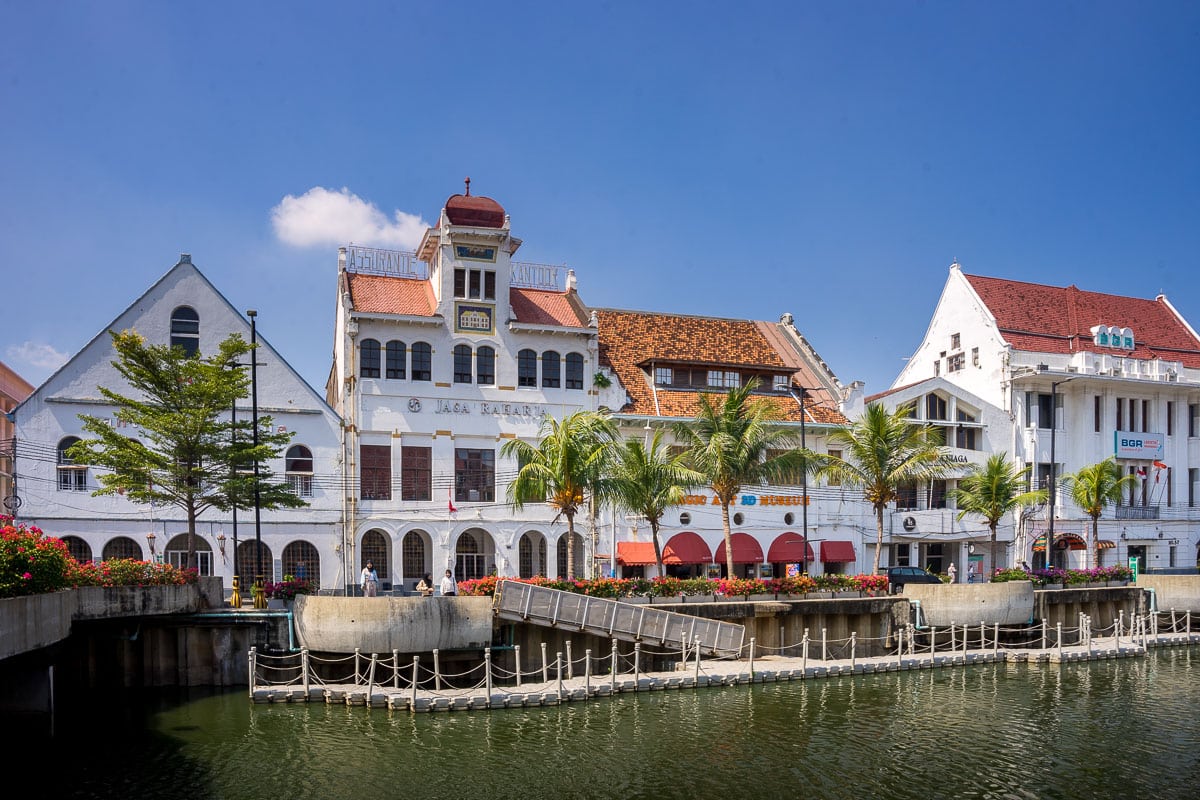
The Dutch wasted no time turning Batavia into a tropical version of Amsterdam. And it wouldn’t quite be Amsterdam without canals now, would it?
Kali Besar, meaning Big River or Big Canal, runs between Sunda Kelapa Harbour and the heart of Batavia. The Dutch dredged the small Ciliwung River and turned it into a navigable waterway.
Sampans could then travel up and down the Big Canal, carrying goods and passengers arriving on tall ships right into Batavia. Slaves and horses pulled larger vessels from the harbour up the canal to warehouses where they unloaded the cargo.
The street running along the canal was a prime location in Old Batavia, and the area quickly turned into the place to be and be seen in the city. A stroll along the canal takes you past former warehouses, mansions and offices. There are a few beautiful but dilapidated Art Deco buildings along the canal to admire.
Look out for the distinct red brick building, which stands out among the whitewashed facades of Kota Tua. Toko Merah (The Red Shop) dates from 1730 and was built as the residence for the governor-general of the Dutch East Indies.
Kota Intan Drawbridge

The oldest bridge in Indonesia, dating from 1628, spans the Kali Besar, about halfway between Fatahillah Square and Sunda Kelapa Harbour. During its heyday, it would swing open, allowing vessels to float up the canal into Batavia.
The bridge went by several names during its history. Initially called the English Bridge, it changed names to Chicken Market Bridge, The Central Bridge and Queen Juliana Bridge before being renamed Kota Intan after independence.
Sunda Kelapa

Jakarta’s historic port is Sunda Kelapa, and means Coconut of Sunda. It dates from the Sunda Kingdom, which existed from 669 to approximately 1579. Today, this small harbour caters to traditional wooden ships called pinisi only, which are used for transporting goods between islands.
A 15-minute walk north of the drawbridge along the Kali Besar takes you past more aged warehouses, shipyards, and skeletons from the Dutch East India Company (VOC) era until you reach Sunda Kelapa.
The ideal way to experience Sunda Kelapa is from the water, and a boatman will likely offer their services as you stroll along the port.
As your boatman rows you around the harbour and between the vibrant two-masted wooden boats, they will point out their origins by reading their names. These wooden vessels journey from ports as far away as Kalimantan, Sulawesi, Sumatra , and beyond.
Note: The Sunda Kelapa area is a lot grittier and in a much worse state of decay than around Fatihallah Square. The water was a toxic green shade on our visit. This might not appeal to everyone, so you could skip the old port if you choose. However, if you come, you might be pleasantly surprised at this unique place.
Chartered Bank of India, Australia & China

One of the most prominent buildings along the Big Canal is the former Chartered Bank of India, Australia and China. Built in 1921, this Art Deco building has seen better days and is in some desperate need of TLC, but perhaps in that lies its charm.
We could see large stained glass windows from the outside, and we really wanted to go and explore the inside.
We spotted a group of Indonesians with cameras at one of the entrances and walked over to say hello. They told us to wait, and about ten minutes later, someone unlocked the gate. The photographers stormed in, catching us off guard and leaving us behind. As soon as the guy spotted the two tourists, we were told we couldn’t enter.
Even after offering a bribe, the answer remained firm -NO!
Bank Indonesia Museum

Completed in 1909, the initial headquarters of the Netherlands Indies Gulden (De Javasche Bank) is a fusion of Neo-Renaissance and Indonesian architectural influences.
Initially serving as the central bank of the Dutch East Indies, it was later nationalized and became Bank Indonesia in 1953 following independence.
Venturing inside, the museum provides a unique chance to admire the architectural splendour of that era. Additionally, it offers a comprehensive overview of Indonesia’s monetary and trade history, spanning from the pre-colonial era up to the present day.
Jakarta Kota Station

Known as Batavia Zuid (South Batavia) during the colonial era, this train station is still one of Jakarta’s main railway hubs for intercity and commuter trains.
It was also called Beos Station after its proprietor, the Bataviasche Oosterspoorweg Maatschapij (Batavian Eastern Railway Company).
The architect behind this station was Frans Ghijsels, widely recognized for pioneering modern architectural style in the Dutch East Indies. Ghijsels adhered to a design philosophy that valued simplicity as the most direct path to beauty, a principle brilliantly exemplified in the structure of Jakarta Kota Station.
Stepping inside the station building reveals the splendour of its Art Deco design and its striking barrel-vaulted roof. After seeing the building, pop into the convenience store for a cheap drink from the fridge while enjoying the crisp air conditioning.
Lunch at Padang Merdaka

Masakan Padang (Padang cuisine) is the quintessential Indonesian meal and something you must try when visiting the country. Originating from Padang in Sumatra, this cuisine is renowned for its rich and spicy coconut-based curries.
Padang food offers a delightful array of options, from beef, chicken, and seafood to vegetarian curries and more, which can be boiled, steamed or fried. All the dishes are pre-cooked and served at room temperature while the rice is served hot.
There are two kinds of Padang restaurants. In the pesan style, the dishes are displayed in the window, and you simply point at what you’d like, and a waiter serves it onto your plate. Alternatively, the hidang style involves the waiter bringing various small plates to your table. You can then choose your favourites and pay only for what you’ve consumed. Don’t fret about hygiene; the plates are covered with plastic wrap.
For lunch, we hit up the popular Padang Merdaka restaurant for a memorable hidang -style meal.
The waiter stacked over 20 plates on our table, presenting us with a mouthwatering dilemma of choices. We settled on chicken gulai, beef rendang, incredibly spicy baby squid, omelette, crispy fried kangkung (water spinach), and tender boiled cassava leaves.
Besides being an exciting culinary adventure, a Padang meal is also light on the wallet. It offers an unforgettable taste of Indonesian cuisine and culture. Skipping this gastronomic adventure would be a regrettable miss, so dive in and try as many dishes as possible.
Museum of Fine Arts & Ceramics

A brief stroll up the street leads you right back to Fatahillah Square. Here stands the Museum of Fine Arts and Ceramics, an elegant structure characterized by its distinctive Doric columns, frieze, and charming green window shutters.
Completed in 1870, this beautiful building once served as the Court of Justice, also known as the Palace of Justice ( Paleis van Justitie ) during the Dutch colonial period. In 1976, it was repurposed as the Museum of Fine Arts and Ceramics, inaugurated by former President Soeharto.
Inside, the museum boasts an impressive collection of paintings by Indonesian artists. This includes a notable array of romantic and expressionist works. The exhibits span from the year 1880 to contemporary art, offering a comprehensive view of Indonesia’s artistic journey over time.
Post Office

In the northeastern corner of the square, near the Museum of Fine Arts and Ceramics, you’ll find the Kota Post Office. It dates back to 1929 and is an example of the Nieuwe Zakelijkheid architectural style, which gained popularity in the Dutch East Indies towards the end of the 1920s.
Although the building is largely vacant, there are a handful of food stalls inside.
Keep an eye out for the quirky, orange-coloured mailbox stationed outside, proudly bearing the Dutch words brievenbus (letterbox) and buslichting (collection).
A telltale sign of the passage of time is the empty space beneath the buslichting – it’s been quite a while since any mail got collected. #postcolonialproblems 🤦♂️
Kedai Seni Djakarte

Our final destination on this Old Batavia walking tour is Kedai Seni Djakarte, a shining example of Kota Tua’s potential. This handsome building, once abandoned in 2006, found a new purpose in 2013 when it was transformed into a fantastic café.
Originally housing the Sea and Fire Insurance Company, today’s establishment seamlessly blends colonial architecture with the ambience of a European street-side café and Indonesian charm.
Don’t miss their collection of music cassettes on the ground floor – remember Michael Bolton, Roxette, and Boyz 2 Men? They’re all still thriving on the shelves at Kedai Seni Djakarte.
Be sure to sample the poffertjes (think mini Dutch pancakes), served with your choice of butter or ice cream. And, of course, the coffee here is simply superb.
And here, with the sweet taste of Dutch treats and the kick of Indonesian caffeine still in your system, is where our Kota Tua Jakarta comes to an end.
Jakarta Old Town Walking Tour Map

The red-tiled roofs, weathered facades, and canals are the perfect backdrop for a unique Jakarta experience. We hope you find a few quirky hidden gems while strolling through the colonial heritage of Kota Tua Jakarta ✌️
Halo! And thank you for posting this helpful self-guided walking tour – our favorite thing to do in a new city. We did it today, 8 Nov 2023 and found it helpful. Cafe Batavia is indeed a friendly and delightful place to stop. A few updates: at the moment the Museum Wayang and the Museum of Fine Arts are closed for renovations. We noticed a tourist information stand near Cafe Batavia and the lady there told us about free guided walking tours through different parts of the old city at 9:30 am and 13:30 most days. It was already 10:30 by the time we saw this, but she suggested we go to the meeting point, a different tourist information kiosk at the Southeast corner of Fatahilla Square (nearest the Museum of fine arts) and indeed on enquiring there two young ladies gave us a personal tour of the neighborhood. It was fun to get to know them and ask them questions and learn a little about their likes and suggestions for Jakarta in general.
Hi Richard, We agree – the best way to get to know a new city is on foot. Thanks for the helpful info on the free walking tours and the updates on the museum renovations.
Leave a Reply Cancel reply
Your email address will not be published. Required fields are marked *
Save my name, email, and website in this browser for the next time I comment.

Visiting Kota Tua in Jakarta
- Share on Facebook
- Share on Pinterest
- Email Article
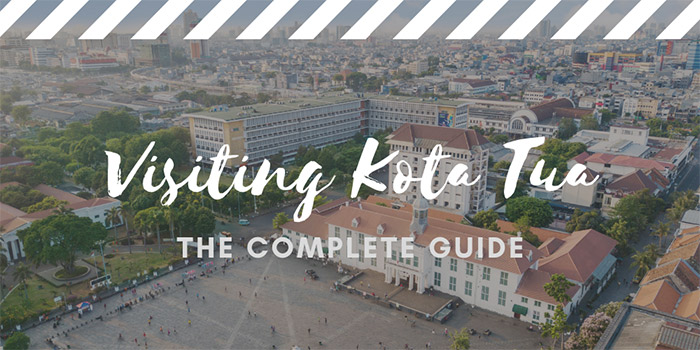
Kota Tua is one of most popular places to visit in Jakarta. It is ‘Jakarta’s Old Town’ . This is an area about 4.5 km north of the Monas that mainly consists of Dutch colonial buildings that were built during the 17th century. When you visit Kota Tua, you will see an area of the city that is quite distinct from other areas of Jakarta. It noticeably feels more European.
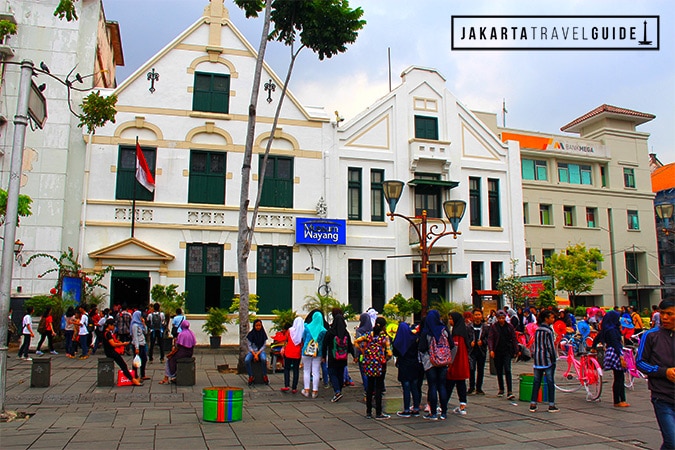
Over the last 10 years, the local government has been initiating more revitalization projects of Kota Tua. Currently, it is a vibrant place to visit with mixed crowds of locals, expats, and international tourists.
When you visit Kota Tua you will be able to explore street markets , various museums and the port area of Jakarta.
Very few domestic or international visitors to Jakarta leave without visiting some of the attractions in Kota Tua.
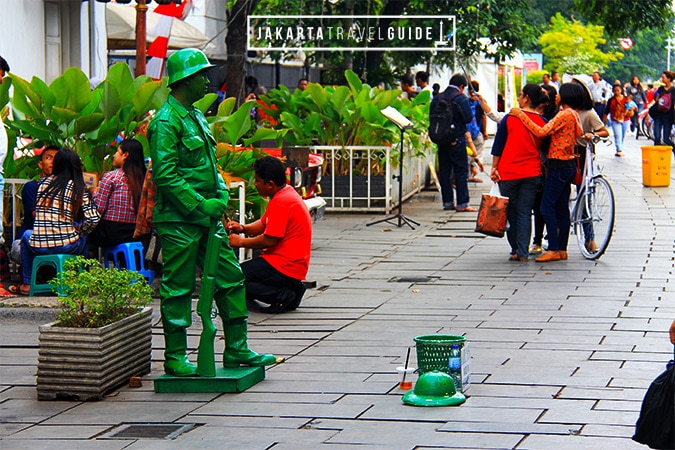
What are the top attractions in Kota Tua Jakarta?
When you visit Kota Tua the first point of interest that most tourists go to is Fatahillah Square (locally called Taman Fatahillah in Bahasa Indonesian).
Like most European city squares, Fatahillah acts as the center of ‘Old Town’. If you’re visiting Kota Tua, just ask your driver to drop you off near Fatahillah Square – they should know exactly where it is.
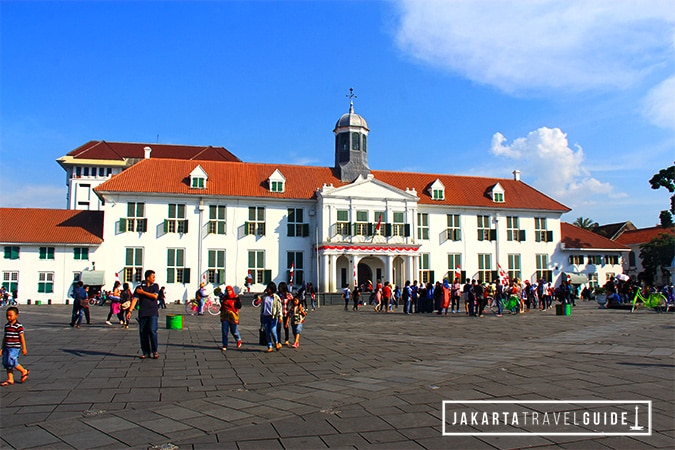
Fatahillah Square is a vibrant public space. People walk around the square taking photos of the surrounding colonial buildings. They also have colourful bikes that you can rent here for photo opportunities. You will see school groups, locals, domestic tourists, expats and international tourists all converging in this area. If you visit Kota Tua, you must check out Fatahillah Square.
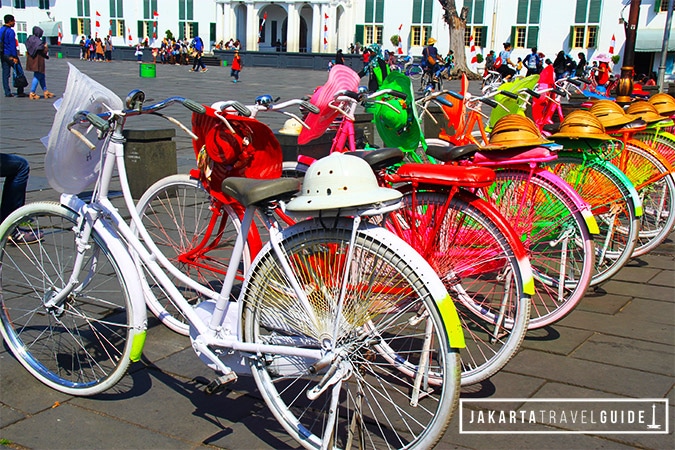
There are five museums located around Fatahillah Square and they include:
- Bank of Indonesia Museum
- Bank Mandiri Museum
- Wayang (Puppet Museum)
- Jakarta History Museum
- Museum of Fine Art and Ceramics .
It’s common for visitors to go from one museum to the next to get a better idea of Jakarta’s history and progress towards independence.
If museums are not your thing, check out the street markets around Kota Tua. Over the last few years, the markets around Fatahillah Square have improved. Currently, you can find everything from Henna Tatoos to traditional Indonesian snacks in this area.
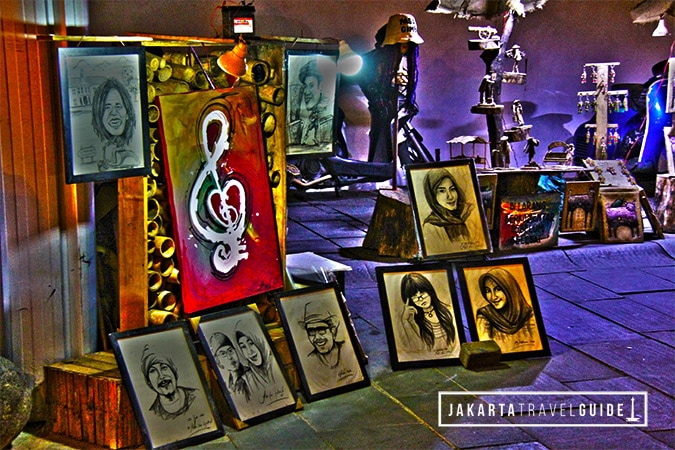
And let’s not forget about coffee ( kopi in Bahasa Indonesia). Kota Tua has some really cool cafes that have been designed in traditional Dutch colonial buildings. The most famous one if called Cafe Batavia .
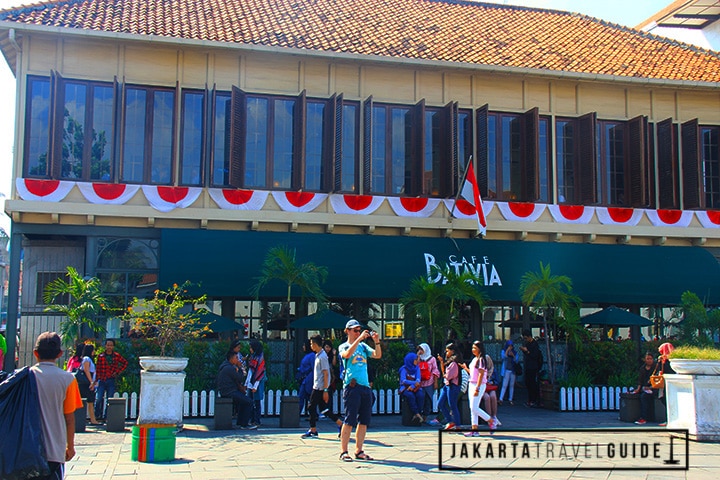
Most international tourists visiting Kota Tua also visit Cafe Batavia. You can get excellent views of Fatahillah Square from the top floor as you enjoy the superb ambiance. It also has good live music and popular candle-lit dinners.
There are also a few attractions north of Fatahillah Square that are popular with visitors to Kota Tua.
Try to check out Sunda Kelapa and the Maritime Museum .
Sunda Kelapa is the old port area of the city. Photographers love Sunda Kelapa because of the dated boats that appear stuck in time.
What you need to know before visiting Kota Tua Jakarta?
Kota Tua is one of the top attractions in Jakarta, but traffic can be heavy in this area. Therefore, you might want to also visit Chinatown and Mangga Dua during the same day that you are visiting Kota Tua.
Chinatown is located a few kilometers south of Fatahillah Square, whereas Mangga Dua is located a few kilometers to the east.
Kota Tua isn’t particularly well known for great accommodation choices. Actually, most visitors tend to stay closer to the Monas in Gajah Mada. There is a sprinkling of new hotels there such as Yello Hotel Harmoni and HARRIS Vertu Hotel Harmoni that are popular with tourists.
The museums in Kota Tua are very affordable, therefore if you are travelling with children, the whole family can visit Kota Tua.
There are multiple cafes, restaurants and convenience stores located near Fatahillah Square. You can easily find food and refreshments in this area of Jakarta.
Should you visit Kota Tua?
Kota Tua is one of the top places to visit in Jakarta. It is a great place to learn about Indonesian history and colonial influences. Even if you aren’t a museum lover, you will surely enjoy checking out bustling Fatahillah Square and the neighboring local markets.
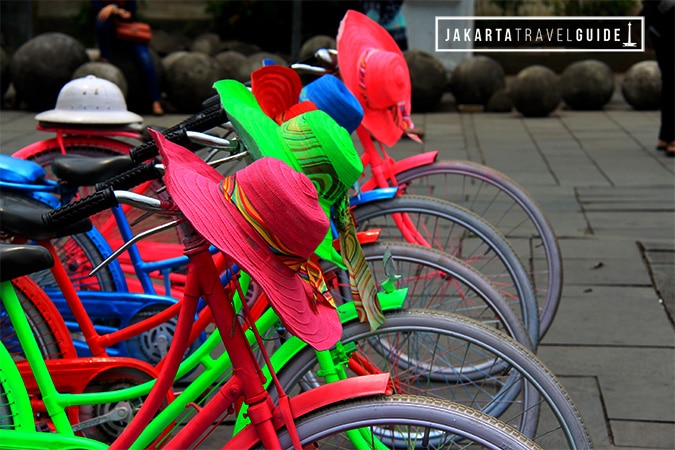
10 Closest Hotels to Kota Tua in Jakarta
***Organized according to Star Rating
Jakarta’s old Batavia
The sprawling metropolis of Jakarta can seem daunting these days. It’s hard to imagine it was so small just a century ago… but that heritage still exists.
Written by Michael Turtle
Michael Turtle is the founder of Time Travel Turtle. A journalist for more than 20 years, he's been travelling the world since 2011.
Michael Turtle is the founder of Time Travel Turtle and has been travelling full time for a decade.
Updated: February 17, 2024
Things to do in Kota Tua, Jakarta’s Old Town, Indonesia
In this sprawling metropolis of a city, it’s hard to imagine that Jakarta was once confined to just a small area here around an area that was known as Batavia. Today it is called Jakarta’s Old Town or Kota Tua – and it’s a reminder of the centuries of Indonesian history dominated by Europeans.
In the 16 th century, the Dutch established a base here that was the centre of commerce in the region. Because of its strategic position and access to natural resources, it quickly became an important hub across the Indonesian archipelago.
Oddly, though, it always stayed relatively small.
Just a century ago at the start of the 1900s, Jakarta only had a population of about 150,000 people. Since then, it has grown to a size of up to 28 million in the greater urban area.
The history of that small colonial origin has almost been lost in the wave of development that has washed over the city.
What has been preserved, though, is within the 1.3 square kilometre area of Kota Tua.
Not all of the buildings have been protected as well as they should have been, unfortunately, but wandering through the streets and the main square give an impression of the European settlement that started Jakarta on the path to becoming one of the largest cities on the planet.
If you would like to visit Jakarta’s Old Town, I have a few suggestions on the best things to do in Kota Tua.
You can see all my suggestions on this map.
If you’re using your smartphone, just click on the icon in the top right to open the map in your Google Maps app and all of the markers will load up.
Jakarta History Museum
Set in the former City Hall of Batavia, the Jakarta History Museum has exhibits about the city and its location from prehistoric times through the colonisation period and until the independence of the country.
The building was constructed in 1710 and is a good example of the grand public buildings in the area. The exhibitions are presented quite crudely and a visit to Kota Tua just to see the museum would probably not be warranted.
Wayang Museum
On another side of the main square where the Jakarta History Museum is located is the Wayang Museum dedicated to Javanese puppetry. The puppets are used in a traditional form of theatre common on the island of Java but also present in other islands across the country.
The museum has a large range of exhibits from different times and gives a good showcase of the evolution of the local puppetry. The signs explaining the items are not of a high standard but a lot of the museum is self-explanatory.
There are also occasional performances using traditional instruments like the gamelan.
Fine Art and Ceramic Museum
The Fine Art and Ceramic Museum is located inside the old Court of Justice built by the Dutch in 1870. The old court makes up one of the sides of the main square of Kota Tua and is one of the most impressive architectural buildings in the area.
The museum houses traditional ceramics showcasing the range of designs across the archipelago. There are also artworks from the 19 th and 20 th century and more modern ceramic works.
Maritime Museum
A 10 minute walk from the main square of Kota Tua is the Maritime Museum, set inside former warehouses of the Dutch East India Company.
The sea is extremely important to a country made up of thousands of islands – for civilian transport, military and commercial reasons. The museum showcases some examples of the history over the centuries.
Bank Indonesia Museum
Although the topic may sound a bit dry – banking – this is actually one of the most interesting museums in the area.
The Bank Indonesia Museum takes a modern multimedia and interactive approach to telling the story of banks in Indonesia. It covers relevant history and has an emphasis on the production of bank notes.
Batavia Café
After all the museums and walking around the Old Town, the most authentic place to have a rest is Batavia Café. It’s on the main square with a view across to the old City Hall.
The building was constructed in 1850 in the colonial style and the interior has been designed with this history in mind. It’s been a restaurant for about 20 years but tries to replicate the mood of the old Dutch city of Batavia.
As you can tell, there are lots of things to see in Kota Tua. I don’t think you should visit the city and not have a look around Jakarta’s Old Town.
If you would like to get a better understanding, I would recommend one of these tours.
- Private Tour: The Old Batavia Trail from Jakarta
- Private Tour: Discover Jakarta Old Town with Dinner
- Kota Tua Food Tour
But, regardless, take a moment to enjoy how peaceful it is here in Kota Tua. Think about what Jakarta was like when it was this small. Then prepare yourself, and head back out into the chaos of the city!
THE BEST ACCOMMODATION IN JAKARTA
Although there are a few good areas to stay in Jakarta, I would recommend Menteng for most visitors.

The friendly staff and evening entertainment are just part of the appeal at Konko Hostel , which is also clean and modern.

With its colonial-style architecture, Hotel Des Indes Menteng offers more than the standard budget hotel, plus it’s got a great free breakfast.

There’s a wonderful mix of modern and old charm and The Hermitage , where its garden and pool feel like an oasis in the busy city.

With a beautiful panoramic view of the city, the Park Hyatt also has large rooms, modern facilities, and a lovely outdoor pool.
More stories about Indonesia
- Things to do in Jakarta
- How to visit Raja Ampat
- Bali's World Heritage rice terraces
- When Komodo dragons attack
- The importance of Prambanan Temple in Yogyakarta
- Chasing the lava on Mount Merapi
- Discovering the world's largest Buddhist temple
- A journey to find orangutans in Borneo
9 thoughts on “Jakarta’s old Batavia”
What a fine post, Michael.
I’ve been looking for some information about Kota Tua Jakarta, and this post is actually give me more than just a brief info, but also inspiration for my assignment. Thank you for writing and sharing it. 🙂
Thanks for the kind words. I’m glad I was able to provide a bit more information. It’s a really interesting place but it gets a bit lost in the huge metropolis of Jakarta. I enjoyed seeing it for myself and learning more.
Thank you, it was very informative! I’ll definately have a look to your other articles 🙂 Greetings, Sheila
Tetap Bangga dengan Indonesia..
Hi Michael! We will check those places. We are planning to explore batavia this month. Terima Kasih!
Great! Let me know what you think of them and if you would add any other spots.
Hi Michael, This looks unreal! I’ve done quite a bit of reading about old time Batavia, and I’m so keen to see what life must’ve been like for the Europeans who lived there back in the malaria infested colonial days. Question. Im unfamiliar with Jakarta…. so we want to stay in a hotel somewhere near the old Batavia area. but is it closer to the Soekarno Hatta airport or the Halim airport from the old town? For the sake of our little one, we want to make it as easy as possible to get in and out of the city.
Thanks Michael!
Soekarno Hatta is the nearest airport to the old Jakarta City, about 45 minutes by taxi
if you will visit these places , please tell me , i will guide you because my house near from these place and i know about these
Leave a comment Cancel reply
Find me on the socials:, subscribe for news and deals:.
top stories:
A Visitor’s Guide to Kota Tua Jakarta, The ‘Old Town’ of the Capital
Jakarta Old Town, also known as Kota Tua Jakarta, is a historic area located in the heart of Jakarta city. It is a must-visit destination for those who are interested in the rich history and culture of Jakarta. The area is home to a number of historical buildings and monuments that date back to the Dutch colonial era, which makes it a perfect spot for a day trip or a weekend excursion.
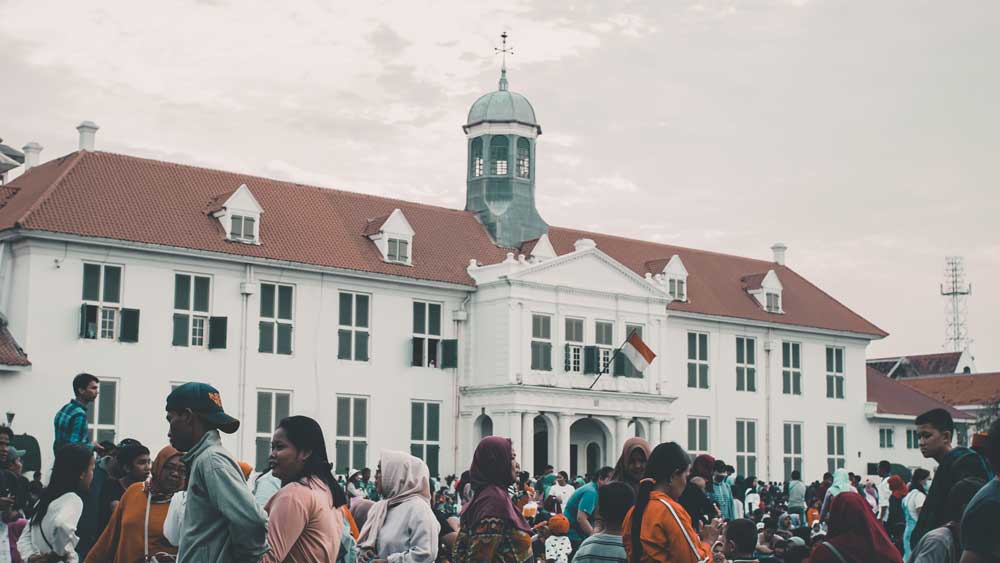
The Jakarta Old Town is divided into two main areas, the Kota Tua Barat and the Kota Tua Timur. The Kota Tua Barat is the western part of the old town and is home to the Fatahillah Square, which is the most popular spot in the area. The square is surrounded by several historical buildings, including the Wayang Museum, the Bank Indonesia Museum, and the Bank Mandiri Museum. The square is also home to the Jakarta History Museum, which showcases the history of Jakarta from the pre-colonial era to the present.
The Kota Tua Timur is the eastern part of the old town and is home to the Jakarta Kota Station, which is one of the oldest railway stations in Indonesia. The station is a popular spot for photography and is also home to a small market where you can find traditional snacks and souvenirs. The Gedung Arsip Nasional is also located in this area, which is the national archive of Indonesia. The building is a beautiful example of Dutch colonial architecture and is open to the public for visits.
Another popular area, and a must when visiting Kota Tua Jakarta, is Jalan Surabaya, known for its antique shops and markets. The street is named after Surabaya, which is a city in East Java and was once a major trading hub during the colonial era. The street is lined with a variety of antique shops and markets, where visitors can find a wide range of antique items such as furniture, ceramics, textiles, and collectibles.
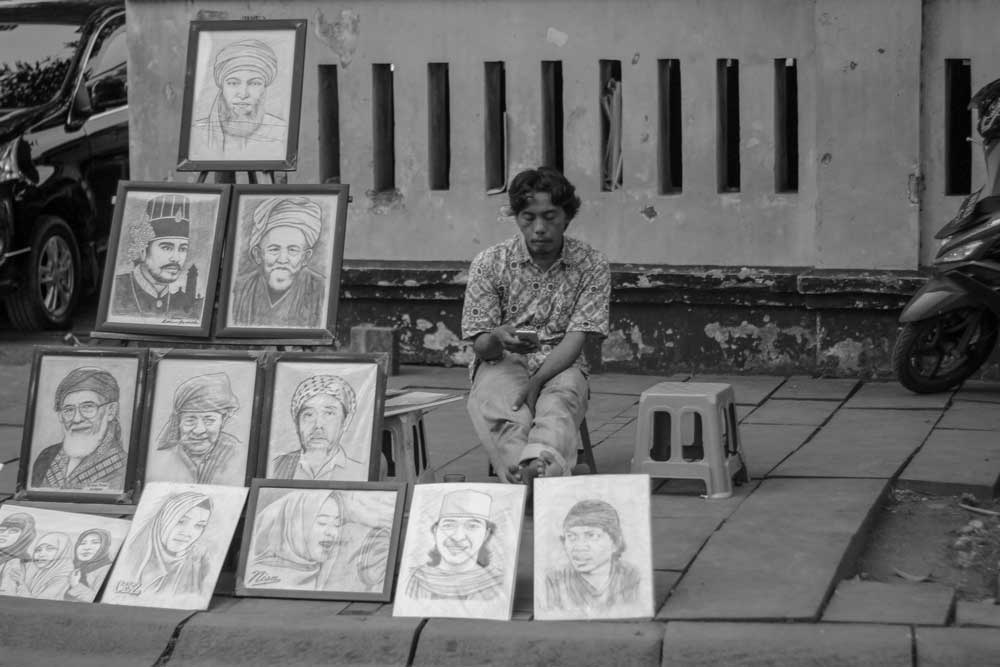
Surabaya Antique Market a great place for visitors to find unique and rare items. The market is open every day, and visitors can find a wide range of antique items from different eras and cultures. The prices at the market can vary, but bargaining is expected, and visitors can often find a good deal on the antiques.
The Jakarta Old Town is also famous for its street art. The area is home to several murals and graffiti that depict the history and culture of Jakarta. These street artworks can be found on the walls of buildings and along the streets. Visitors can take a stroll through the area and admire the different styles of street art.
In addition, Jakarta Old Town is also a great place to try traditional Indonesian food. The area is home to a number of traditional restaurants and street vendors that serve delicious local dishes. Visitors can enjoy a meal at one of these restaurants or street vendors and experience the true taste of Jakarta.
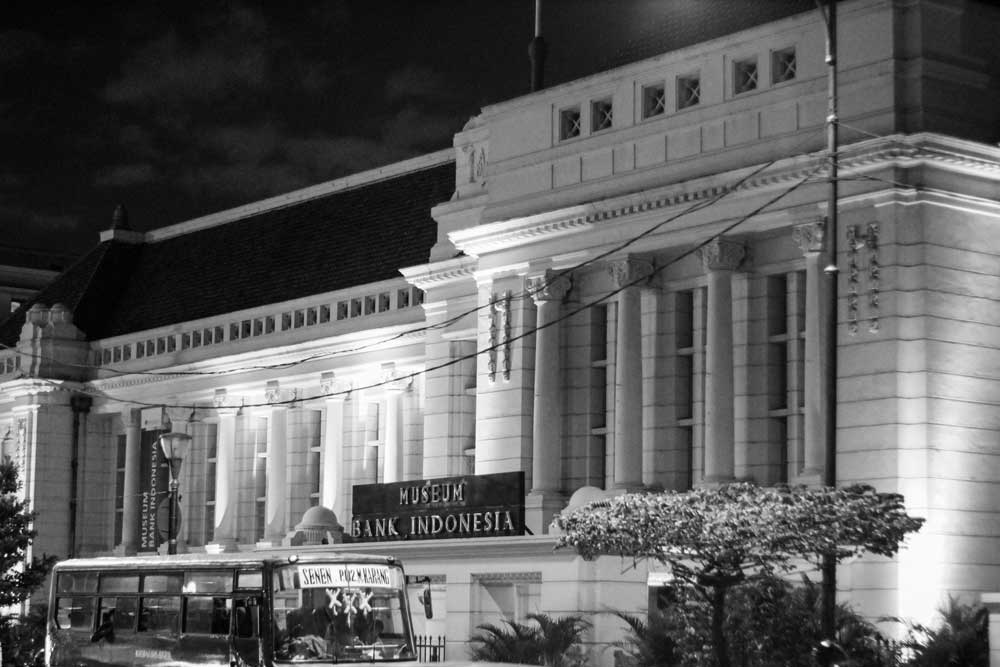
Overall, Jakarta Old Town is a must-visit destination for those who are interested in the history and culture of Jakarta. The area is home to several historical buildings and monuments, street art, and traditional restaurants. Visitors can spend a day or weekend exploring the area and learning about the rich history of Jakarta.
NOW! Jakarta
Subscribe to our newsletter.

- Latest Offers
British School Jakarta Achieves Record-Breaking Diversity with Spectacular Dance Event
Discover exclusive offers for accor live limitless members at the jakarta international bni java jazz festival 2024, the menteng heritage society and the fight to preserve jakarta’s historic homes , the legend lives on: hotel indonesia kempinski jakarta embraces history with new annual campaign, two new weekly culinary festivals unfold at gran melia jakarta: latin night and asian sate, a fusion of flavors with henshin and alquímico’s culinary collaboration , celebrating earth month, starbucks focuses on sustainability in “a team effort”.
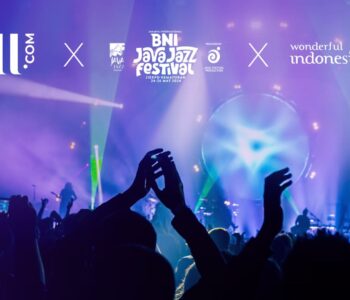
Embrace the Spirit of Eid al-Fitr Holidays with Special Offers at Gran Melia Jakarta
PT. PHOENIX COMMUNICATIONS Jl. Kemang Utara VII No. 19, Lembong House Unit #C Kel. Bangka - Jakarta Selatan
Tel: +62 719 9312 Fax: +6221 781 2476
- Discover Jakarta
- Art & Culture
- MVB Indonesia
Subscribe to the Newsletter

- All City Walks
- Philippines
- All Stories
- Architecture
- Make your own map
- Clients & Partners
- Our Journey
- Methodology
Ten New Heritage Hotspots in Kota Tua, Jakarta's old town

There has never been a more exciting time to explore Jakarta’s old town. For so many years, Kota Tua’s grand colonial buildings were left to rot, but thanks to the work of these passionate locals, edgy art galleries and cool cafés are now popping up on empty floors of old post offices, in the attics of monumental merchant mansions and in abandoned spice warehouses. Kota Tua is no longer a distant memory of a long-gone past, but a new exciting chapter in Jakarta’s history. The cobblestoned streets of Jakarta’s old town have become a location of choice for the city’s creative entrepreneurs. One by one the crumbling properties around Fatahillah Square and the Kali Besar canal are being renovated. App and map in hand, we rented two vintage bikes and matching sunhats at the square and pedalled away from the tourist crowds. We checked out ten new places in the old town and liked what we found.
1. MULA Kota Tua & Kafe Sunyi
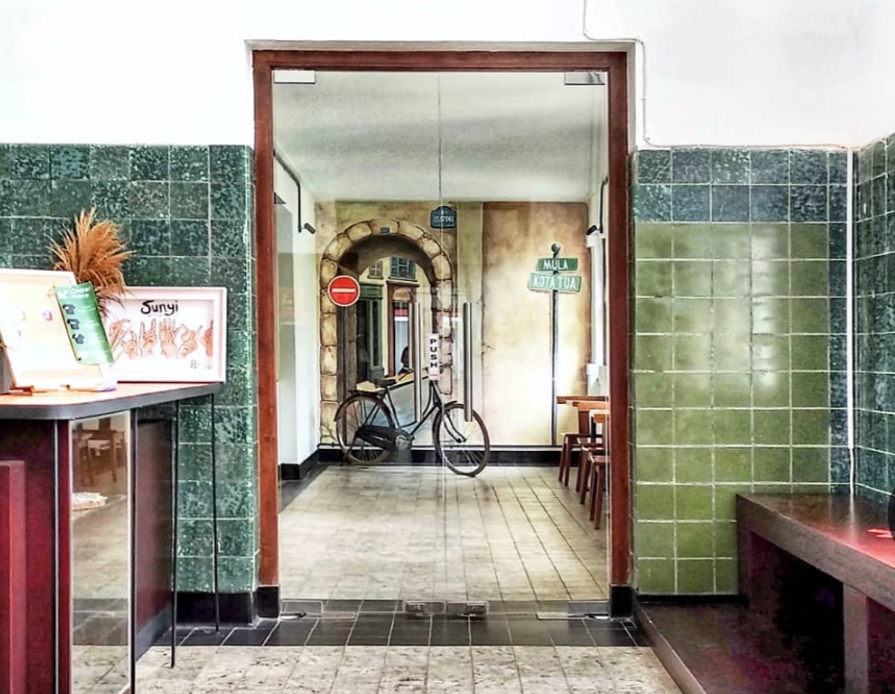
The beginning
MULA literally means 'the beginning'. It is a coworking space and creative hub in the heart of Old Town. MULA provides anything a start-up needs: from a simple desk to a podcast studio. More than just a physical space, MULA is all about connecting communities. The main goal is to support an ecosystem of small industries and start-ups in the Old Town surrounding. MULA welcomes its neighbours for dance classes, language courses and coaching clinics. Supported by Bank Indonesia, part of the top floor has even been repurposed into a communal prayer room for local residents.
More than just a physical space, MULA is all about connecting communities.
Silent coffee
On the 2nd floor is Kafe Sunyi, which means Silent Café. A coffee shop run by our diffable friends. Sign language comes in handy when you order your cappuccino. Don’t worry, the friendly baristas here will happily teach you.

Gedung Rotterdamsche Lloyd is more than a century old. Purpose-built for the Dutch shipping company the building features period architectural details such as the huge stained glass windows and the dark green tile tableau that give the place a unique style and character.
MULA Kota Tua . Gedung Rotterdamsche Lloyd 2nd floor . Jl. Kali Besar Timur 4 no. 37 . Open daily 7am-9pm . +62 21 759 20274 . @mula.kotatua
2. Gedung Cipta Niaga
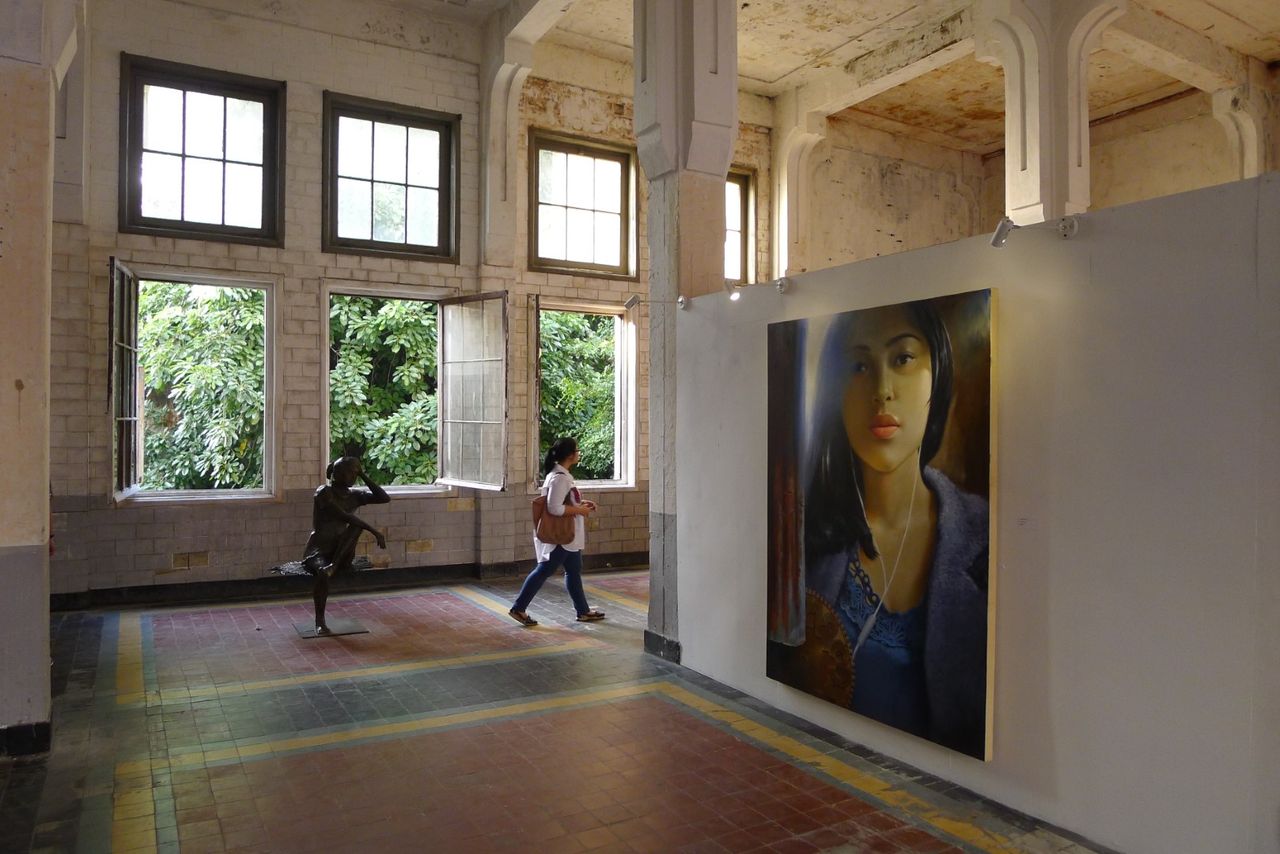
Prominent trading house
Built as the headquarters of the powerful colonial trading company Internationale Crediet en Handels Vereeniging Rotterdam office, who hired the most prominent architecture firm they could find: Ed Cuypers en Hulswit, designers of colonial Java’s prestigious properties. Nice to know: Ed Cuypers was the younger cousin of Pierre Cuypers, the architect of the famous Dutch Rijksmuseum in Amsterdam.
This was prime property in the colonial days, occupying the whole block so it would face the river and the square.
Art Deco Gem
After Indonesian independence, the building got snapped up by Cipta Niaga, one of Indonesia’s main trading houses. With its high ceilings, tiled floors, stained glass windows and majestic art deco staircases, it’s a popular venue for exhibitions, film shoots and even yoga classes. It is now under the management of Konsorsium Kota Tua Jakarta, follow them on IG @kotatuajakarta.id to catch new events!
Gedung Cipta Niaga . Jl. Kali Besar Timur 4 No. 31 . Exhibition opens daily 10am-7pm . +62 21-6903606
3. Kali Besar

Little Amsterdam
Kali Besar literally means the big canal, a piece of superb water engineering by the Dutch. When they built Batavia city, they dredged the small Ciliwung stream and turned it into a navigable waterway, so the many sampans could offload goods from the tall ships in the Sunda Kelapa harbour.
Kali Besar was wealthy and cosmopolitan with merchant mansions and canal houses, reminiscent of the Dutch capital Amsterdam.
River Revival
In the 19th century, the harbour was relocated, and Jakarta’s wealthy businessmen moved to the newly planned Weltevreden a leafy suburb with wide boulevards and white-plastered art deco villas. The canal was still a place of trade, but no one lived there anymore. With the Kota Tua revival movement also the Kali Besar river has been cleaned up. The work of architect Budi Lim who in 2002 received a UNESCO award for the revitalisation of the National Archives. He was inspired by the Cheonggyecheon River in Seoul where the riverbanks are now full of life and play. We like the concrete balconies where you can sit and relax after a long day of exploring Kota Tua.
Kali Besar . Jl. Kali Besar Timur . 24/7
4. Mel’s Dorm

Home for travellers
Hendry Lee dedicated this hostel to his passion for travelling and his wife, Mel. Since 2018, the hostel has been the home for thousands of backpackers from across the globe. A cheap and cheerful place that offers a variety of rooms, a kitchenette and a hidden library.
Kerta Niaga is a compound of 3 buildings from different periods: the 19th century, early 20th century and post-independence. Mel’s Dorm is located in the most recent one, Kerta Niaga #2. A building with a modest design of tropical modernism. The hanging stairs are iconic.
I dedicated this hostel to my passion for travel and my wife, Mel.
Breakfast with a view
Mel’s dining area is the best part. It overlooks the canal. Whether you make your own food or order from the many places around, there’s always a good crowd. It’s the place where backpackers meet.
Mel's Dorm . Kerta Niaga . Jl. Kali Besar Timur no 8 . 2nd Floor Opens daily 10am-10pm . +62 21 2269 3377 . @melsdorm
5. Kedai Seni Djakarté
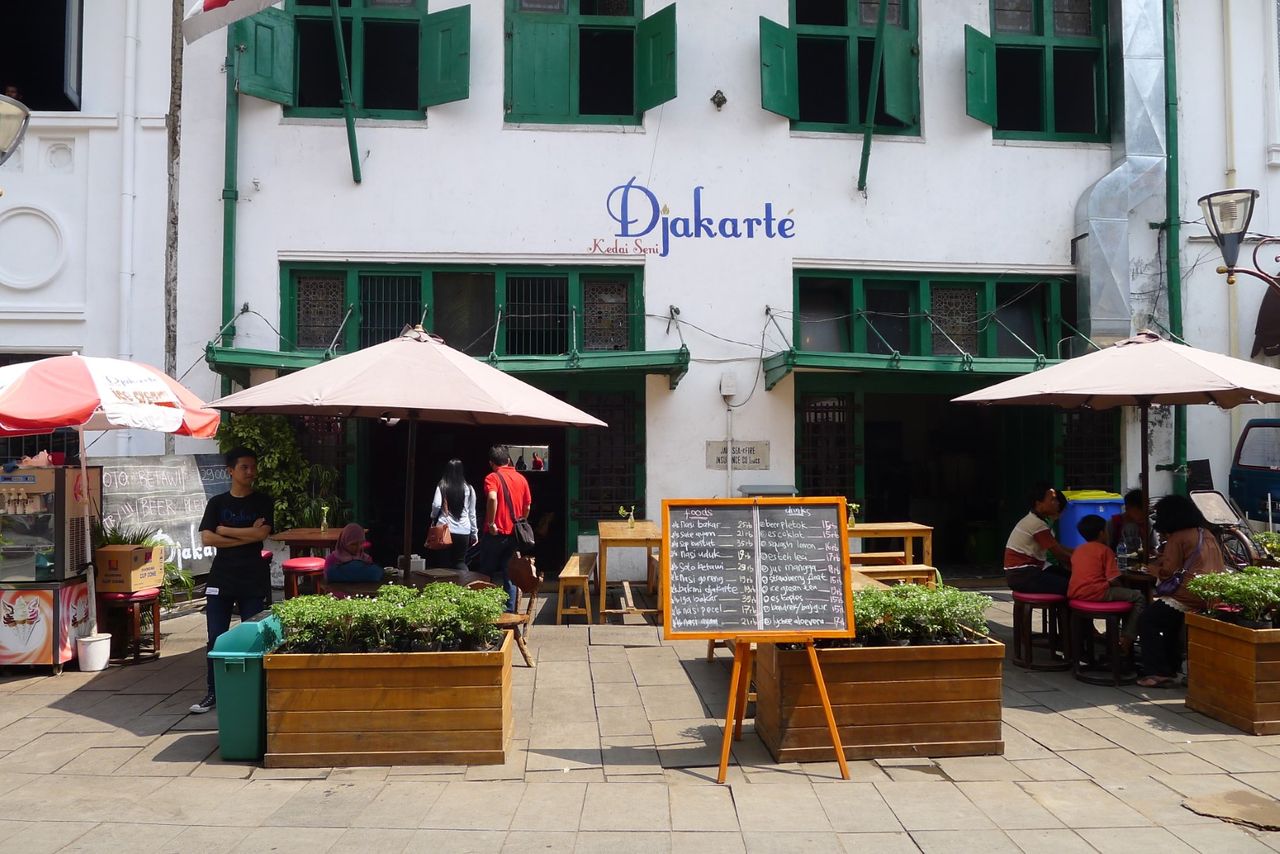
Heritage café
This traditional colonial building had been abandoned for over a decade. When the Djakarte team saw the original grand marble staircase, they were sold and embarked on a renovation. The shabby chic two-story interior is replete with crooked oil paintings and long wooden tables. Upstairs is more of a loungey atmosphere, decorated with vintage paintings and photographs. They even have a small collection of Indonesian cassette tapes available for sale!
Quirky little café on the southwest corner of the square to watch the captivating crowd of street vendors and portrait artists.
Thirst quencher
Es Toples Djakarte is a good choice: soda mixed with fresh fruit. Choose your favourite colour and flavour: strawberry, kiwi, grape or passion fruit. A perfect thirst quencher on a hot day!
Kedai Seni Djakarté . Jl. Kali Besar Timur 4 No.29 . Open daily 10am-9pm . +62 818 08374431
6. Bar Historia

Inspired by the spice trade
The café takes its inspiration from the rich spice trade history that put Jakarta on the map 500 years ago. The menu offers a wide selection of spice-infused smoothies, cocktails and teas, handcrafted by expert mixologists. Manager Putri Karleti explains “We use ingredients like cinnamon, nutmeg and sesame to create exciting flavour combinations”. The lofty interior is sparingly furnished with an attractive mix of modern solid teak tables combined and elegant vintage cabinets but the real highlight is tfloor-to-ceilinging mural created by local artists depicting historic scenes in the Kota.
We use ingredients like cinnamon, nutmeg and sesame to create exciting flavour combinations.
Our favourites
We loved the Jamrud Khatulistiwa, cucumber, pineapple, honey, basil and mint, heavenly goodness in a glass (Rp 38.000). Hungry? Try the Bakpao Ketawa, literally translated as ‘happy bun’, filled with spicy all-time favourite beef rendang and a sprinkle of spring onion. Also the Gemblong Pisang (grilled banana dipped in melting coconut sugar, Rp 27,000) is a real treat. All dishes are prepared and presented with love, care and a hint of history.
Historia Food & Bar . Jl. Pintu Besar Utara No. 11 . Mon-Fri 10am-10pm Sat-Sun 8am-10pm . +61 21 6904188
7. Gedung Kerta Niaga
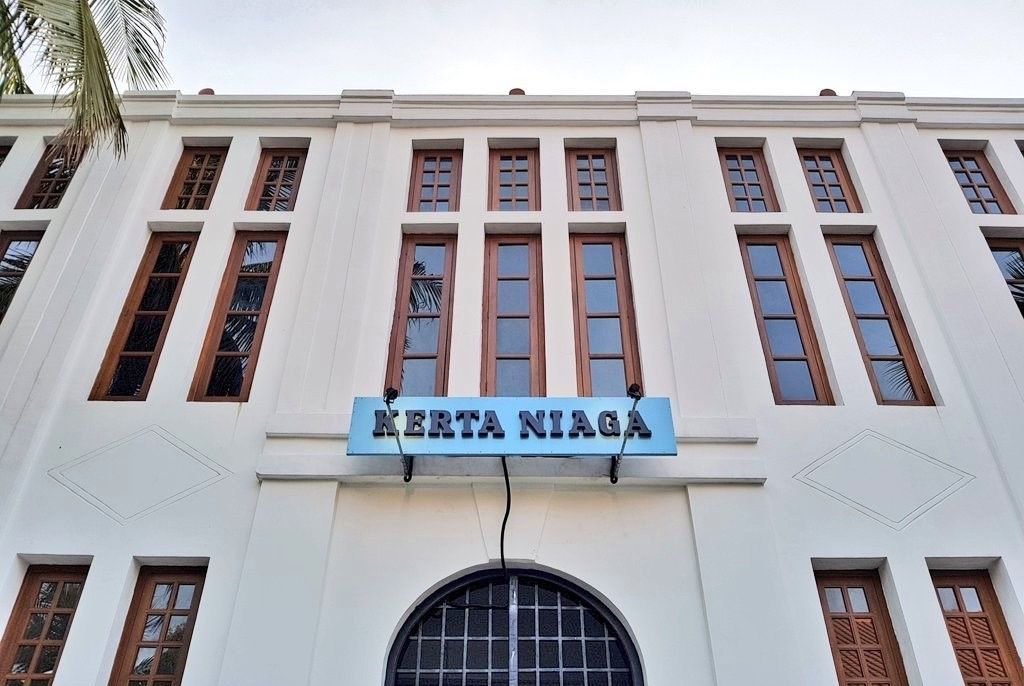
More than 100 years old
Kerta Niaga 1 was built as an office for the Koloniale Zee en Brand Assurantie Maatschappij, an insurance company. Desiged by popular architecture firm Ed Cuypers en Hulswit in 1912. The days when trade in the Dutch Indies was booming. Later after independence, it became the office for Kerta Niaga a state-owned logistics company.
The art deco building has great historical value, adapted to suit the local environment with materials available at the time.
Tropical Art Deco
The art deco building has great historical value, adapted to suit the local environment with materials available at that time. Featuring tall columns, symmetrical floorplans and lots of glass to maximise natural light in the deep building. Konsorsium Kota Tua took the building under its wing. Temporarily used as a marketplace, and now a trick eye museum, a popular site for family and kids field trip.
Magic Art 3D Museum . Jl. Kali Besar Timur No. 9 . Open daily 10am-7pm IDR 35,000 – 80,000 . +62 811-8986-696
8. Acaraki Jamu
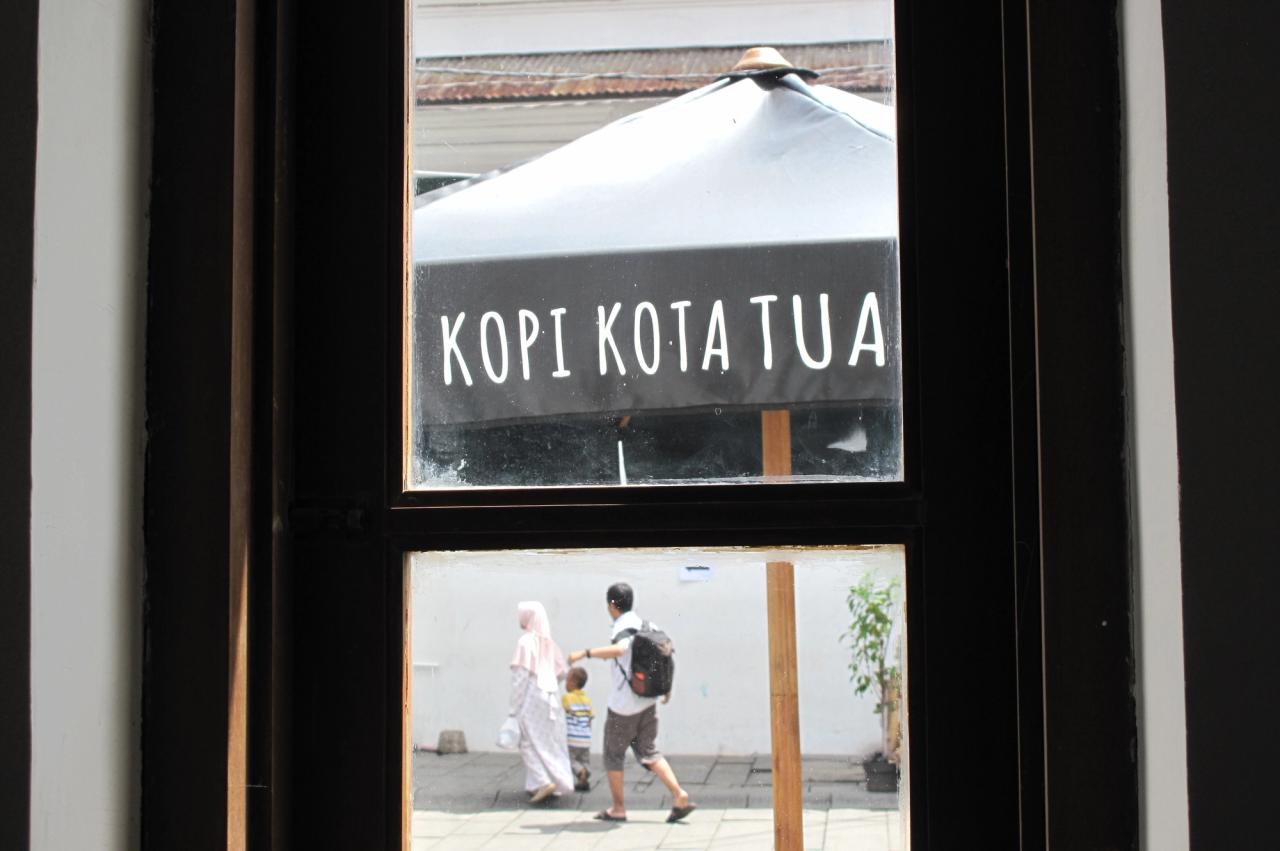
More than just a herbal drink
Owner Jony Yuwono has done four years of research seeking the best ingredients from across Indonesia’s archipelago and mastering ancient techniques of jamu making. For centuries, jamu is believed to have healing and immunity benefits. More than that, jamu bears a deep philosophical meaning: it has 8 main recipes that stand for the 8 cycles of life and 8 points on a compass. This is why a traditional Jamu Gendong (jamu-seller lady) always carries 8 bottles on her back… Acaraki experiments with modern brewing pressing and dripping techniques to introduce the jamu legacy to a younger audience. Our favourite picks are Golden Sparkling; a refreshing cold jamu with soda that ingredients that boost blood circulation and healthy skin; and Saranti is also on our list. Beras kencur (kaempferia galangal) with creamer will mprove your appetite.
The word ‘acaraki’ refers to the professional title of jamu makers during Majapahit Kingdom era back in the 13th century.
Postcard from Kota Tua
Make your own postcard at Acaraki’s terrace. Choose from various batik patterns, local designs or make your own. They provide designated boxes for each day of the year, so that we can pick the exact dat for your card to be mailed.
Acaraki Jamu . Kerta Niaga . Jl. Pintu Besar Utara no. 11 . Open daily 10am-10pm . +62 811-8306-488
9. Wonderloft Hostel

Home for wanderers
“So many tourists come to Kota Tua, but there was no hotel” - that is how owner Karen came up with the idea for a boutique hostel in the heart of the old town. When she was shown this run down building opposite Bank Indonesia, she immediately saw the potential of the beautifully arched spaces and large floorplates right in the middle of Kota Tua. A six month renovation stripped the building back to its bare shell, original details intact. Karen’s team created a comfortable lounge area on the ground floor and added four floors of capsule bedrooms and Wonderloft opened early 2017.
So many tourists come to Kota Tua, but there was no hotel.
Feel at home
As a house rule guests take off their shoes and put on comfy slippers for an extra homey feel. Each floor has spacious lounge areas for quiet relaxation and who wants to party can do so downstairs or at the weekly pub-crawl nights.
Wonderloft Hostel . 6-8 Jl. Bank . Open 24/7 . +62 26072218
10. Gedung OLVEH
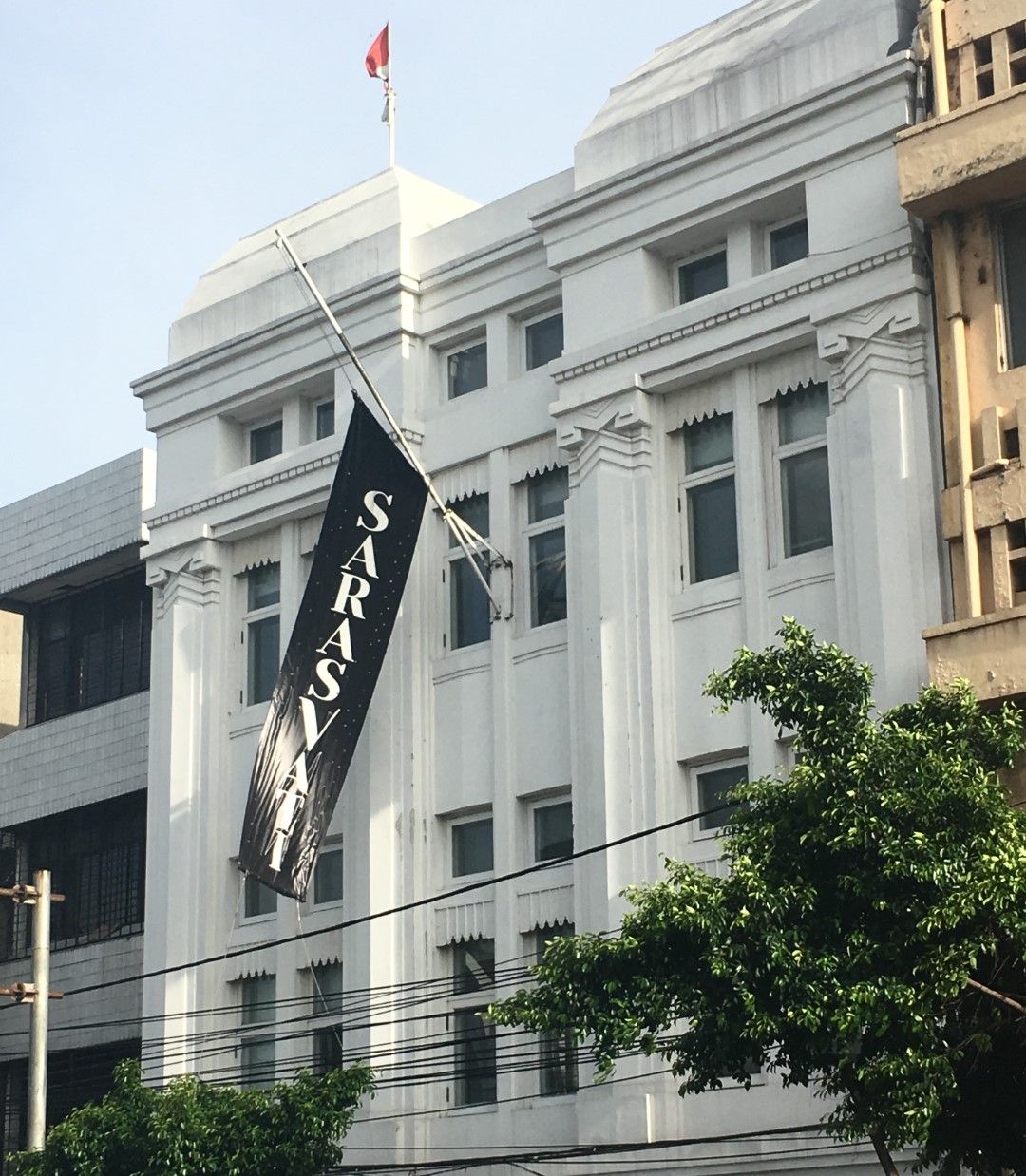
Art deco gem
OLVEH stands for Onderlinge Levenszerkering Van Eigen Hulp, a Dutch Indies Insurance Company, designed by RLA Schoemaker, brother of famous architect CP Schoemaker. Staying true to its roots, the building is still owned by an insurance company, Jiwasraya. Vacant for years, it got a new lease of life as an office for research agency IRAI. The building is now a happening place with pop-up art exhibitions, workshops and other fun events. It also host Kopi Kopling, a coffee lab to train people who work in coffee industry.
Squeezed between Jakarta’s modern skyline stands proud this art deco gem.
Age matters
The original tiles above the entrance says ‘OLVEH van 1879’. It is the birth year of the company, the building itself dates back to 1921.
Gedung OLVEH . Jl. Jembatan Batu No. 50 . Open daily 9am- 6pm . +62 21 6905803
Kota Tua walking trail
These ten heritage hotspots are part of a handcrafted off-the-beaten-track itinerary for only the most curious and adventurous travellers. The sites are handpicked by locals in the know, namely, the friendly folks from Konsorsium Kota Tua who are fighting the battle to safeguard Jakarta’s heritage from those ubiquitous jackhammers while keeping the souls of the buildings alive and the spirit of the community intact.
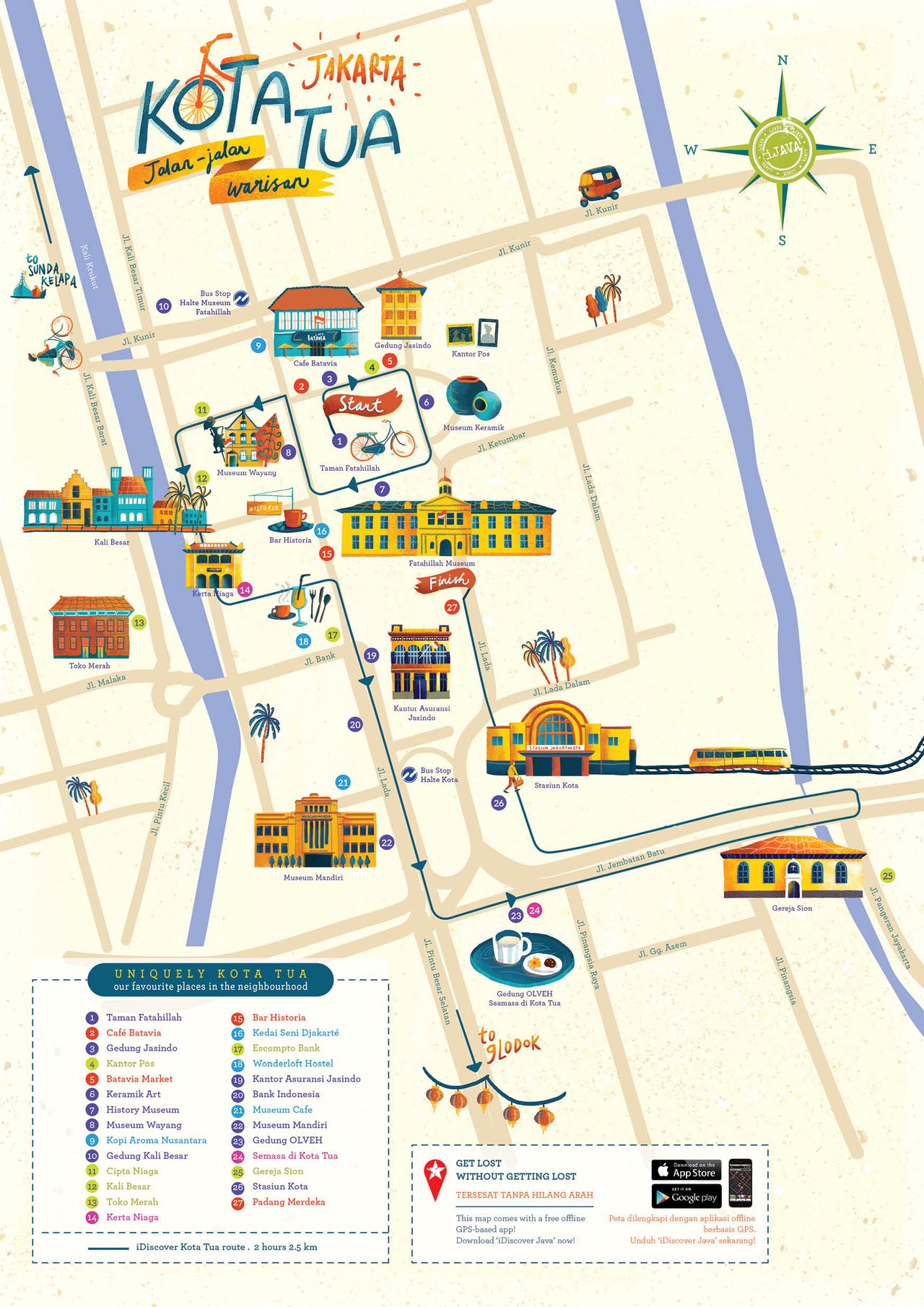
Discover Kota Tua's heritage gems and more hidden secrets on the iDiscover Kota Tua Walking Map, designed by the lovely Astrid Prasetianti and available from Konsorsium Kota Tua or as a free download here ->
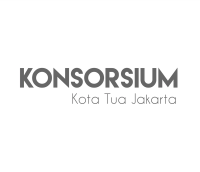
Designed by

An NGO investing in buildings of the past to create a better future for Jakarta Old Town. Konsorsium yang berfokus dalam revitalisasi dan pemanfaatan bangunan-bangunan cagar budaya serta pemberdayaan komunitas di Kota Tua Jakarta.
Astrid Prasetianti’s imaginative, colourful illustrations and photographic work are like little pieces of art that are guaranteed to brighten your day. Astrid Prasetianti memberi sentuhan imajinasi penuh warna di setiap illustrasi dan fotografi yang dibuatnya, seakan karya-karyanya menjanjikan untuk membuat hari kita bersinar cerah.
Asuransi Jasindo, Indonesia’s second largest insurance company has its roots in the Dutch colonial days dating back as far as 1845. The company’s long heritage is still treasured today, epitomised in the iconic art deco Gedung Jasindo on Fatahillah Square. Asuransi Jasindo adalah perusahaan asuransi terbesar kedua di Indonesia yang menawarkan berbagai produk mulai dari perlindungan rumah hingga asuransi perjalanan. Perusahaan ini berdiri pada masa penjajahan Belanda yaitu sejak tahun 1845. Warisan budaya panjangnya masih berharga hingga kini, seperti properti Jasindo yang berada di kota tua berupa Gedung Jasindo bergaya art deco yang khas.
TheJakartaPost
Please Update your browser
Your browser is out of date, and may not be compatible with our website. A list of the most popular web browsers can be found below. Just click on the icons to get to the download page.
- Destinations
- Jakpost Guide to
- Newsletter New
- Mobile Apps
- Tenggara Strategics
- B/NDL Studios
- Archipelago
- Election 2024
- Regulations
- Asia & Pacific
- Middle East & Africa
- Entertainment
- Arts & Culture
- Environment
- Work it Right
- Quick Dispatch
- Longform Biz
Jakpost guide to Kota Tua
Those wanting to explore every nook and cranny of Kota Tua may consult the list below.

Share This Article
Change size.

ome to historic buildings, Kota Tua in West Jakarta is a popular destination for both local and foreign tourists. Its main attraction is Fatahillah Square, an open space area surrounded by colonial buildings. There, visitors can do some museum hopping and stroll around the outdoor area.
In addition to visiting museums, Kota Tua is also known as a favorite spot for lovebirds to take pre-wedding photos.
Those wanting to explore every nook and cranny of this old town area may consult the list below.
How to get there
Kota Tua is strategically located in the heart of Jakarta, which makes it easy for both local and foreign tourists to visit.
Those coming from Bogor or Bekasi in West Java can board a train to the nearby Jakarta Kota station.
From South Jakarta, visitors can hop on the Transjakarta Blok M to Kota route.
Those residing in Central Jakarta can opt to ride mikrolet (public minivan) M12 from Pasar Senen to Kota or the M08 from Tanah Abang to Kota. Meanwhile, North Jakarta residents can hop on mikrolet M15 from Tanjung Priok to Kota.
As for those who live in East Jakarta, the recommended option is a public bus, the Mayasari Bakti AC70 from Kampung Rambutan to Sarinah. From Sarinah, passengers can continue on Transjakarta to Kota Tua.
What to wear
The open space area usually gets hot during the day. Hence, casual outfits like T-shirts, short pants and sandals are highly recommended.
(Read also: J akpost guide to Blok M Square )
What to see
Museum hopping is a recommended activity while visiting Kota Tua. There are three museums located in Fatahillah Square: the Jakarta History Museum (Museum Sejarah Jakarta), the Museum of Fine Arts and Ceramics (Museum Seni Rupa dan Keramik) and the Puppet Museum (Museum Wayang). The entrance fee for each museum is Rp 5,000 (less than 50 US cents) for adults, Rp 3,000 for college students and Rp 2,000 for children and students.
History buffs may want to visit the Jakarta History Museum as it has exhibits about the history of the capital from Dutch colonization to the Japanese occupation.
In addition to Jakarta’s history, the place also showcases antique furniture on the second floor, such as the the large Schepenkast bookcase made in 1748. In the backyard, visitors can visit an underground dungeon, where Indonesian heroes Pangeran Diponegoro and Untung Suropati were said to have been imprisoned.
The Museum of Fine Arts and Ceramics is a must-visit place for art enthusiasts. There, visitors can marvel at paintings by Basuki Abdullah, Antonio Blanco, Lee Man Fong and Henk Ngantung.
As the name implies, the museum also exhibits ceramics from various cities across the archipelago, including Malang in East Java, Yogyakarta and Bandung in West Java.
Those wanting to learn about wayang (traditional puppets) should schedule a visit to the Puppet Museum. Originally built by the East Indies Company (VOC), the building is now home to more than 6,500 wayang. Every Sunday, the place also hosts a wayang performance, which is free for museum patrons to enjoy.
In addition to those three museums, visitors can also drop by the Bank Mandiri Museum and Bank Indonesia Museum that are located opposite the Jakarta Kota train station.
Meanwhile, those wanting to take pre-wedding photos may consider Rumah Akar, an empty building on a corner of Kota Tua that has giant roots growing inside. Available for rent for Rp 200,000 per hour, the place is tad creepy, but it is popular for both photos and video shoots.
In the square's open space, visitors will spot more than a handful of colorful sepeda ontel (antique bikes) that are available for rent for Rp 20,000 per 30 minutes. Those wanting to explore Kota Tua’s surroundings can also join a guided bicycle tour. Priced at Rp 70,000, the owner of the bicycles is the tour guide who brings visitors to five spots, namely Toko Merah, Jembatan Kota Intan, Sunda Kelapa Port, Menara Syahbandar and the Maritime Museum (Museum Bahari).
Other interesting attractions in the area are the living human statues. Scattered around the open space, visitors can take photos with these unique performers for a fee.
(Read also: Indonesia postpones plan to propose Kota Tua as world heritage site until next year)
What to eat
Café Batavia has become an iconic culinary spot in Kota Tua. In 1884, the building was used as a trading office for E. Dunlop & Co and later turned into Kantor Kapal Hadji (Kongsin Tiga) in 1920. It was then changed into a restaurant in 1992 and today serves a plethora of dishes, including bitterballen (a Dutch meat-based snack), pasta, classic eggs Benedict, steak and egg, dim sum set and fried rice.
A post shared by Cafe Batavia Jakarta (@cafe_batavia) on Jul 30, 2016 at 11:45pm PDT
Meanwhile, those craving Indonesian comfort foods like nasi goreng (fried rice), mie goreng (fried noodles), soto Betawi (Betawi beef soup) and sop buntut (oxtail soup) can visit Kedai Seni Djakarte.
What to shop
Since Kota Tua is a historic area, the choices to shop are quite limited. However, those wanting to bring one or two souvenirs home may want to purchase wayang from the Puppet Museum where the prices start at Rp 15,000.
In the outdoor area, visitors can also buy a number of souvenirs like rings, bracelets and necklaces, as well as temporary tattoos.
- The museums are closed on Monday.
- History buffs are advised to go on weekdays to avoid the crowds.
- Kota Tua frequently hosts art exhibitions. During our visit, the Museum of Fine Arts and Ceramics planned to host an exhibition by high school students. Meanwhile, a temporary exhibition titled the "Forsaken Children of the Compagnie" is currently on display at the Tjipta Niaga building until May 14.
- It is suggested to bring a bottle of mineral water while exploring Kota Tua as the weather could be quite hot. (kes)

Magnitude 6.5 earthquake strikes off Java island: authorities

Philippines to endure extreme heat until mid-May

Indonesia one step from Olympics after beating South Korea
Related articles, where to stroll in a city where ‘nobody wants to walk’, nasdem considers supporting anies for reelection in jakarta, returning holidaymakers cause traffic uptick on java toll roads as ‘mudik’ season ends, man found dead on bali’s mount agung, beyond the pandemic: when digital divide meets new normal, related article.
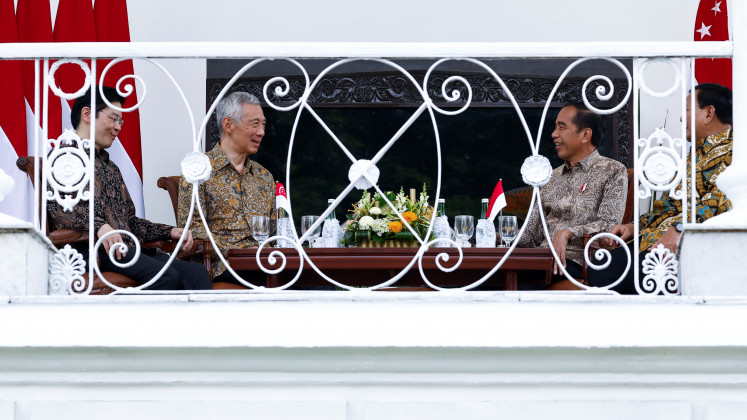
Jokowi, Lee pledge continuity in Indonesia-Singapore ties at their final retreat
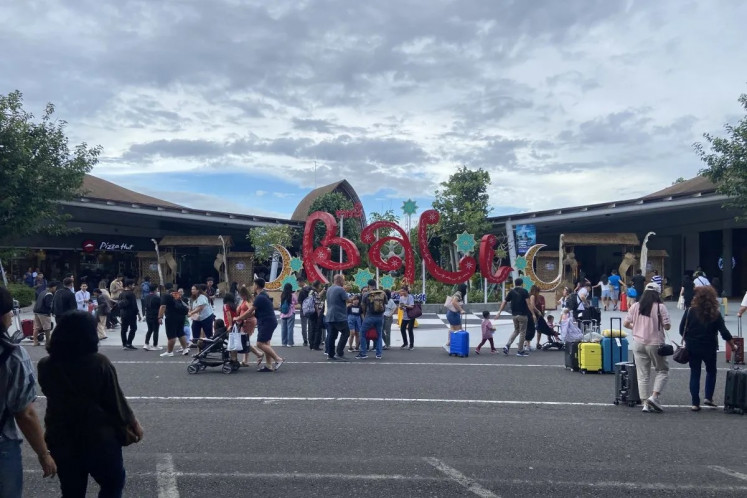
Surcharging air passengers?
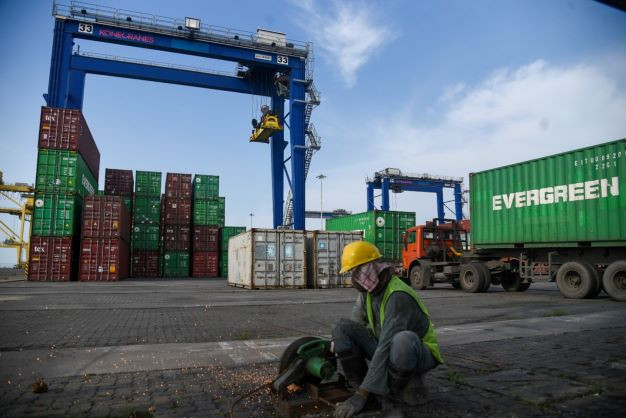
Govt revising import restrictions following business outcry
Court kicks off hearings for legislative election disputes, idx composite climbs up by 1.7%, retouches 7,100 mark, golkar branch head up against jokowi’s son-in-law for n. sumatra governor, scotland's humza yousaf expected to resign as first minister, 2024 biofuel subsidy funding needs 55% increase: bpdpks, israel concerned over possible icc arrest warrants related to gaza war, korean nationals deported for illegal tv shoot in bali, change is bigger than being in cabinet or not: anies.
- Jakpost Guide To
- Art & Culture
- Today's Paper
- Southeast Asia
- Cyber Media Guidelines
- Paper Subscription
- Privacy Policy
- Discussion Guideline
- Term of Use
© 2016 - 2024 PT. Bina Media Tenggara
Your Opinion Matters
Share your experiences, suggestions, and any issues you've encountered on The Jakarta Post. We're here to listen.
Thank you for sharing your thoughts. We appreciate your feedback.
Travel Stories
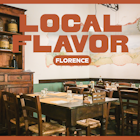
Apr 29, 2024 • 5 min read
Plan your meals in Florence with this local's guide to tried and trusted places to eat and drink.
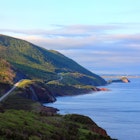
Apr 28, 2024 • 7 min read
This Maritime province on Canada’s eastern coast is a pleasure to explore by car, bus, plane or bicycle. Here’s how.

Apr 28, 2024 • 11 min read
The German food scene has changed in recent years, with lighter dishes and more variety alongside Bavarian favorites. Here's what you should try.

Oregon’s myriad landscapes are like a playlist of Mother Nature’s greatest hits. These unforgettable road trips will show you the best of them.
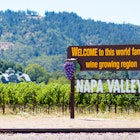
With hundreds of wineries and restaurants, Napa is dizzying to first-time visitors. Our expert guide is here to help.
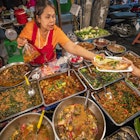
Apr 28, 2024 • 6 min read
Find out how to make your bhat stretch further with these budget travel tips for Chiang Mai, Thailand's “Capital in the North.”
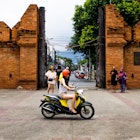
Apr 28, 2024 • 5 min read
Find the top spots for lively night markets, delicious street food and historic architecture with this neighborhood guide to Chiang Mai.
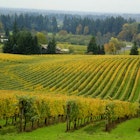
Apr 27, 2024 • 5 min read
If you’re curious about Oregon wines, start with this list of 10 standout wineries in the Willamette Valley, all of which offer a range of tastings.
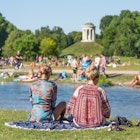
Apr 27, 2024 • 6 min read
It may be Germany's most expensive city but there are still plenty of ways to visit Munich on a budget if you know how.
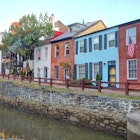
Apr 27, 2024 • 4 min read
Connect with Washington, DC's oldest neighborhood with this walking route.
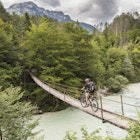
With affordable public transport, great food markets and discount cards, a visit to Slovenia needn't blow up your budget.
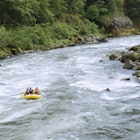
With top places to eat and drink, and outdoor activities to keep you entertained, Ashland offers far more that just the Oregon Shakespeare Festival.
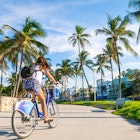
Apr 27, 2024 • 8 min read
Glitzy Miami could easily drain your vacation fund, but there are plenty of ways to save money in the the Magic City and still have a great time.
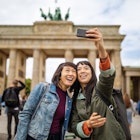
Apr 27, 2024 • 17 min read
Looking to travel to Germany in 2024? Here's your guide to maximizing points and miles to get there with all the perks.
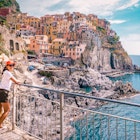
Apr 26, 2024 • 15 min read
Our expert deep dive into the many benefits of American Express Membership Rewards and Chase Ultimate Rewards.
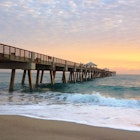
Apr 26, 2024 • 6 min read
Just a short hop from Miami are some of Florida's most alluring and well-known attractions – from the Everglades to the Venice of America.
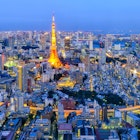
Apr 26, 2024 • 12 min read
Get to Japan for less with this expert's guide to maximizing points and miles for your next big trip in 2024.
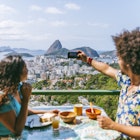
Apr 26, 2024 • 17 min read
Here's your guide to maximizing American Express Membership Rewards by leveraging a transfer partner.
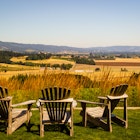
Apr 26, 2024 • 7 min read
Oregon's Willamette Valley is a hub for wine tourism. Plan your visit with this guide.

Plan your visit to Saskatoon, the largest city in the Canadian province of Saskatchewan, with our first-timer's guide.
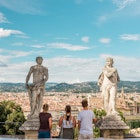
Organizing a group trip can be a daunting task. That's why we've gathered nine destinations that will make a big gathering an unforgettable experience.
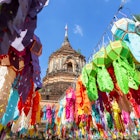
With rainy and smoky seasons, it can be tricky to choose the right time to visit Chiang Mai. Here are our tips.

KOTA TUA – AN OLD TOWN IN JAKARTA CITY

When we first heard of Kota Tua, it was hard to imagine that among Jakarta’s modern skyscrapers, massive malls, sprawling streets, scooters zig-zagging their way through the notorious traffic jams, and a cluster of street food vendors, there is a part of this mega city dating back almost 400 years.
It is the old town of Kota Tua that is a big contrast to the vibrant streets in Indonesia’s Capital Jakarta – the world’s second most populated city.
Most famously known for Fatahillah square in the middle of the town, Kota Tua has become one of Jakarta’s main tourist spots.
Both locals and foreign tourists come here to get a taste of what Jakarta once looked like before it became the mega city that it is today.
Concentrated around the Fatahillah square are loads of well-preserved historic buildings. And most of them are a reminder of when the Dutch still ruled Indonesia.
The streets lined with historic buildings are influenced by European architecture. And most of them have been transformed into insightful places like museums depicting the country’s banking system or displaying traditional artifacts.
While others have been transformed into beautiful hotels and cafes or restaurants in this area that surprisingly felt more like we were walking around a European town rather than an overpopulated city in Asia.

Kota Tua is easily one of the most interesting areas in Jakarta. It is a place that anyone should visit at some point while in the city.
In this guide, we will explain a few basic things you should know about Kota Tua. Like how to get there and what to actually do once you’re there.
WHERE IS KOTA TUA
Kota Tua is a relatively big area in the Northern part of Jakarta. The city’s old town goes all the way up to the coast where a port used by big wooden boats transport goods around the country.
And the center point of Kota Tua is Fatahillah Square.
Although the actual size of Kota Tua is quite big, the focus point is in and around Fatahillah square.
Unfortunately, despite efforts to restore the historic buildings on a larger scale, the restoration progress seems to have been limited to just a small area of this old part in Jakarta city.
And walking for a few minutes out of the popular square and well-maintained buildings you’ll see all these old buildings left in ruins.
A lot of the buildings have been left to deteriorate so much that tropical trees and vegetation grow straight through the walls and roofs.

HOW TO GET TO KOTA TUA
TransJakarta is the main mode of public transport in Jakarta city.
We used TransJakarta the first time we visited the city. And I must say, it is actually quite convenient. The price is cheap and in some situations may actually be less time-consuming than taxis.
The reason why buses could be more efficient than taxis is that in certain cases buses can easily cut through congested traffic because they have their own bus lane.
So while all the cars (and taxis) are stuck and barely moving, the TransJakarta will just go along its private lane which saves a lot of time.
However, buses do require some knowledge of how the system actually works. Like where you need to get off to change buses when needed. Or which is the right bus stop to wait on for the place you want to go.
To use the TransJakarta you need a card with enough credit for the trip. Cards can be bought from many bus terminals and also from convenience stores like Indomaret and Alfamart where you can also top the card up once it runs out of credit.
If you’ve ever read any of our blogs you know we travel on a budget and try our best to keep costs low.
But sometimes we choose what is more practical over what is cheaper.
On our second trip to Jakarta, all the places we wanted to visit were just a few kilometers away from our hotel. So we used taxis to get around and reach those places that were out of walking distance.
And although taxis in Jakarta are the more expensive option of getting around, the fare was rarely over $3.
Taxis in Jakarta can be found just about anywhere and there are loads of different taxi companies.
Whenever we need a taxi we always use the online taxi service Grab . Because we can see what is the price in advance. And most times the car always picks us up within a few minutes.
When grab taxis are too far away or there is a long waiting time we use the Bluebird taxis.
So far, every bluebird we used had a clean car and always used a meter so we [sort of] always paid a fair price. The bluebird taxis are easy to recognize from the blue metallic color and a bird logo.
I said “sort of” because sometimes, Bluebird drivers did take a longer route and just went round in circles to increase the fare price.

INTERESTING PLACES AND THINGS TO DO IN KOTA TUA
All around Kota Tua there are historical buildings that have been renovated and are now being used as museums, restaurants, and hotels.
And most of these interesting places are all dotted around the Fatahillah square. So you could easily walk around the area and visit each place.
Or you could also consider renting one of the bright-colored bicycles and peddling around some of the streets that are actually closed off to the cars.

Either way, I will list some of the places that you should visit while in Kota Tua. The first 3 activities on this list are based on our own research.
Unfortunately, I won’t go into any detail or give insight on what to expect because when we came to Kota Tua, Fatahillah and the popular museums and buildings around the square were closed due to restrictions still in place.
But further down are a few other interesting places that we did actually visit and were very interesting.
If you do visit the places before we visit again and update this post, let us know in the comments below what you think.

Here are some things to do in Kota Tua.
Cafe Batavia: it is one of the most popular cafes/restaurants in Kota Tua and is also known throughout Jakarta as the cafe inside an old historic building. And an interesting fact about the name is that Batavia is the name of the old Jakarta.
Wayang Museum: this is one of those places that at the time of our visit was also closed. The Wayang Museum is one of several museums facing the Fatahillah square. And what is interesting about this place is that the museum occupies the building of what was once a church.
Wayang Museum offers insight and showcases various traditional Javanese puppets.
Bank Indonesia Museum: the building where the central bank of the Dutch East Indies used to operate. Today this building serves as a museum that will take you through Indonesia’s banking history.
SUNDA KELAPA – JAKARTA OLD HARBOUR
It may not be one of the common tourist spots in Jakarta but Sunda Kelapa is anyway an interesting place to visit while you’re already in Kota Tua.
Sunda Kelapa is Jakarta’s old harbor and is just a short 10-minute walk from Fatahillah square in Kota Tua.
This old harbor is sort of an unusual place to visit for tourists but is a good place to add to your list.

When we went, workers were loading various goods and materials on these big bulky wooden boats that are very common in Indonesia. All the goods would be transported all around Indonesia.
Besides being an interesting place to wander around and see all the loading, repairing, painting, and cooking going on in the harbor, you can also do a boat tour.
The boat tour is on a long, narrow, low-lying wooden boat with a slow puffing hand maneuvered engine. And the driver will take you on a ride around the port and close to a lighthouse.

On our way back we were stopped next to one of the big wooden boats to take a few pictures. Before passing by a small village that looks like to be resting on wooden stilts in the water.

Although this may be a sort of unusual thing to do in Jakarta, we can’t really complain and actually liked the 30 or so minute trip. Mostly because it was something unusually different.
There is no entry fee into the harbor.
And if you want to do the boat tour ask one of the local boatmen on small boats. Or ask someone in the harbor, they will know what you mean.
There is no official price for this unofficial tour. But the old friendly boatman that drove us around asked us for IDR 100.000.

WHERE TO EAT / DRINK – TAKE A BREAK
Being a tourist is often a tiring thing. Especially when you’re in a place like Jakarta where temperatures are between 77 and 86 Fahrenheit (25 and 30 celsius).
First of all, consider starting early in the morning to avoid the scorching heat.
And if you want to cool down once the day gets hotter, take a break in one of the restaurants like Batavia Cafe near Fatahillah square.
Maybe even just stop for a cold refreshing drink from one of the many small eateries and pushcarts selling typical Indonesian drinks.
Rather than needing a break from the sun, we actually ended up having to find a place to shelter from the rain.
We already knew where we wanted to go and have something to eat later on. So a quick change of plans and we were on our way for an unplanned breakfast at 7:30 in the morning.
PANTJORAN TEAHOUSE
We had found Pantjoran Tea house through our own research while searching for things to do In Kota Tua.
And then again the place was suggested when we met a local family while eating street food in Jakarta.
Pantjoran is one of the oldest Chinese tea houses in Jakarta. It will make for a nice stop when in Kota Tua because it is only ten minutes walk away.
This old Chinese tea house is located in Jakarta’s very own China town. So although very close to the old town, the buildings don’t really have anything in common with those near Fatahillah square.
This old tea place offers various teas to choose from that are served in a traditional Chinese way. Like tiny teapots and almost shooter-sized teacups. Also, the waiter will serve the tea which makes it like a fine tea experience.

And just keep in mind that this is a Chinese tea house. So if you come for breakfast, don’t expect toast with jam or scones and cake.
Instead, the food menu is like actual meals. For example rice with sides of meat in sweet and sour sauce or chicken in some spicy mixture with noodles.
So at about 7:30 in the morning we were having a breakfast consisting of white rice along with asparagus crab meat soup, chicken fillet in china town sauce, crispy things with chicken and mushroom, and a couple of egg tarts.
There are a few light options available. For example dim sum or pastries like the egg tarts we had. The tarts were really good by the way.
Although the tea alone costs $10 [or more depending on what you choose], it is worth the experience of seeing the whole process and actually understanding that tea is served in a completely different way than what we westerners are used to.
KOPI ES TAK KIE
Kopi Es Tak Kie is a small coffee shop and eatery in a small alley in the china town area near Kota Tua.
This coffee shop is just a 2-minute walk from Pantjoran Tea House house I mentioned.
Don’t expect anything fancy, it’s a simple coffee shop with old tile walls and hidden away behind street vendors in a rather dark alley.
But it is said to have the best ice coffee. Although, my honest opinion is that I could not tell any difference from any other ice coffee I had elsewhere.
If you don’t come for the coffee, consider making a stop and try their Nasi Campur.
Nasi Campur basically means rice mix and here they serve this dish with various cuts of pork, sausage, and egg.
It may not seem like anything special, but the pork is really worth it. Not to mention, pork isn’t so commonly found in Jakarta.
The place isn’t cheap and we actually thought we had got ripped off really bad when we were charged almost $10 for 4 ice coffee and a small plate of rice with some meat cuts.
But it turns out what we paid is the official price.
Ice coffee IDR 22.000 ($1.50) Nasi Campur IDR 55.000 ($3.85) – October 2021
Kota Tua is most definitely one of those places you should visit while in Jakarta. Because you will get a better understanding of the origins of this sprawling megacity.
Unfortunately, we couldn’t really go into much detail about some places that we wanted to visit because of restrictions being in place at that time.
So in the meantime, and until we visit Jakarta again and update this post, let us know if you visited the places listed here. You could leave a comment below for other readers to know what you think.
If you’re considering adding Kota Tua to your bucket list of things to do in Jakarta, make sure to save the URL of this page. Or save the post to Pinterest for future reference. And if you have other travel buddies or adventurous family members, share it on your socials and get your friends and family inspired too!!
Are you in Jakarta and aren’t sure where to go next, then consider adding Bandung to your Itinerary. It is a beautiful city in the highlands and is only a 3-hour ride from Jakarta. There, in Bandung and the cooler climate in the highlands, there are loads of cool [literally] things to do. Like waterfalls, epic sunrise spots, camping. And Bandung itself is an interesting city that is known as the Paris of Java for the many European influenced buildings.
CLICK HERE AND TAKE A LOOK AT THE AMAZING THINGS TO DO IN BANDUNG
One last thing. Java is an amazing island that we just can’t seem to get enough of. Each time we come to Indonesia we spend 2 months just on Java. And each time, we find more and more interesting things to do. If you plan on spending more time in Java, make sure to read our Java articles.
Read All Our Indonesia Guides.
>>Do you want to know more about amazing places in Asia? Subscribe to our e-mail list and receive itineraries, guides, and useful tips to plan an amazing trip!!
Your Name (required)
Your Email (required)
Follow Us On Pinterest .
Leave a Comment Cancel reply
Save my name, email, and website in this browser for the next time I comment.
——— ABOUT US ———

We're Jackie and James, now in our late 30's, we've been traveling on and off for 5 years now. After living our entire lives on a tiny island named Malta, we set off to explore Asia on a budget while writing detailed guides about awesome destinations. We hope our travels help you realize that traveling doesn't have to cost a fortune.
——— SEARCH THE BLOG ———
Recommended

Where to stay in Uluwatu – Best Areas and Hotels
Read More->

Uluwatu Beaches – Perfect for swimming

Jakarta Indonesia – Things To Do in 2 days

Nepal Van Java – The Tiered Village on an Active Volcano

BANDUNG – X8 THINGS TO DO IN PARIS VAN JAVA
- Travel Guide
- Traditional Culture
- Explore Indonesia
- Indonesian culinary
- Beach Vacation

- February 2024
- January 2024
- December 2023
- November 2023
- October 2023
- September 2023
- August 2023
- February 2023
- January 2023
- December 2022
- November 2022
- October 2022
- September 2022
- August 2022
- December 2021
- November 2021
- October 2021
- August 2021
- February 2021

Kota Tua Jakarta- Popular Cultural and historical tourism in Jakarta
Table of Contents
Kota Tua Jakarta ( the Old Town Jakarta )

Source: OkeZone Travel
Kota Tua Jakarta is one of the capital’s most famous landmarks
This place, like the Kota Lama in Semarang , is a tourist spot that is visited by many tourists, both local and foreign
What is the Kota Tua

Source: Hipwee.com
Kota Tua ( Jakarta Old Town ) is a historical area located in the city of Jakarta , Indonesia.
It is located in the northern part of the city, near the mouth of the Ciliwung River and Jakarta Bay.
Jakarta Old Town is the original downtown area and is famous for its Dutch colonial historical buildings and sites.
The buildings are still original and well-maintained
The History of the Old City of Jakarta
The history of the old town begins During the Dutch colonial period,
At that time in 1526, Fatahilah was sent to attack the port of Sunda Kelapa (Jayakarta) in the Hindu kingdom of Pajajaran .
This city is only 15 hectares in area and has a traditional Javanese port city layout.
In 1619, the VOC destroyed Jayakarta under the command of Jan Pieterszoon Coen.
One year later, the VOC built a new city called Batavia in honor of Batavieren, the ancestor of the Dutch.
Batavia was an important trading port in Southeast Asia .
In 1942, during the Japanese occupation, Batavia was renamed Jakarta and still serves as the capital city of Indonesia today.
Many of the buildings in Kota Tua Jakarta date from the 17th century
and reflect the architectural style of the Dutch East India Company.
Some of the notable landmarks in the area include the Jakarta History Museum (formerly known as Batavia City Hall),
Fatahillah Square (also known as Old Town Square), and the Wayang Museum.
Kota Tua today

Jakarta’s Old Town has undergone restoration efforts in recent years to preserve historic buildings and promote tourism.
The area is now a popular tourist destination , attracting local and international visitors.
Visitors can explore museums, visit art galleries, enjoy street performances, and experience the area’s vibrant atmosphere .
The square in Jakarta’s Old Town is often bustling with activity, and there are also many cafes, restaurants, and souvenir shops in the vicinity.
Interesting spots around the old city of Jakarta
There are many interesting spots that you can visit while in the old city
The following is a list of these places
1. Jakarta Kota Train Station

Source : Travel Kompas
The Jakarta Kota Railway Station is the oldest station built since 1870.
Until today this station is still actively used for the Jabodetabek ( Jakarta-Bogor-Depok-Tangerang-Bekasi ) commuter line.
This station has another name, namely Beos Station, which is located directly opposite Fatahillah Park
and even has a distinctive building style from the Dutch era.
2. Fatahilah Museum

The most important and well-known tour of the Old City of Jakarta is the Fatahillah Museum.
The museum is the main icon of Jakarta Old Town tourism, this has made the museum popular as a photo spot in its courtyard.
The interesting fact is that this museum is a silent witness to the struggle of the Indonesian people to achieve independence.
The Fatahillah Museum used to be a city hall building which also served as a courtroom.
There’s even a dungeon.
This means there are still many relics from the Dutch era contained in the Fatahillah Museum.
Formerly the Fatahillah Museum was better known as the Batavia Museum during the VOC colonial era.
3.Taman Fatahillah ( Fatahilah Park )
Fatahillah Park will certainly not be separated from the tour of the Old City of Jakarta, which must be visited.
Right in front of the Fatahillah Museum, you can do various activities in this park, one of which is cycling.
You can tour the Old City of Jakarta with this bicycle, which will certainly make your vacation even more exciting.
Don’t forget, you can also take pictures and enjoy the atmosphere of the Old City in Taman Fatahillah
4. Sunda Kelapa Port

This place is a historical place
In the era of colonialism, Sunda Kelapa Harbor was one of the busiest ports because it had an important role as a place for large trading ships to dock.
Apart from still operating as a port, Sunda Kelapa is also often visited by people who want to travel or just take pictures
5. Jembatan Kota Intan ( Diamond city bridge )

Kota Intan Bridge or Engelse Brug is the oldest bridge in Indonesia because it was built during the VOC reign.
Until now this suspension bridge is still standing strong and is often used as a backdrop for selfies because it is an interesting spot.
6. Old Town Art Street

Source : Tempat wisata baru
Not far from the city station entrance, exactly opposite the front you have entered the Old City Art Street. This area is the center of street artists’ gatherings.
Along the way, you will see street artists busking, cosplaying, and pantomiming in various costumes a la colonial era.
Culinary in the Old Town

Source: Flokq.com
Apart from historical places, Kota Tua Jakarta is also famous for its street food.
Visitors can try a variety of local dishes and snacks, such as Kerak Telur (seasoned scrambled eggs), Soto Betawi (Jakarta-style beef soup), and kue ape ( traditional Indonesian pancakes).
or are you a coffee fan?
In the old city, there is a cafe called Cafe Batavia located across from the museum and Fatahilah Park
You can order coffee or enjoy local food with varying prices starting from IDR 25 thousand
The final word
Overall, Jakarta’s Old Town offers a glimpse into Jakarta’s colonial past and is a great place to explore for history buffs and tourists interested in the city’s cultural heritage .
- cultural tourism
- Heritage city
- Historical place
- Indonesia tourism
- Jakarta tourism
- Kota Tua Jakarta
Related Articles

- Is Indonesia Vegan Friendly?- The Best Guide for Vegan Traveler
- Mount Telomoyo : The Beautiful Hidden Spot Above The Cloud
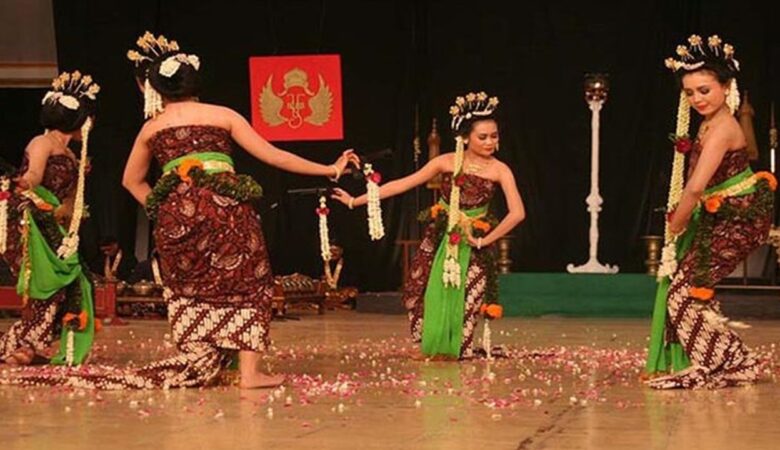
- The Javanese Dance – A Beautiful Heritage of Javanese Culture
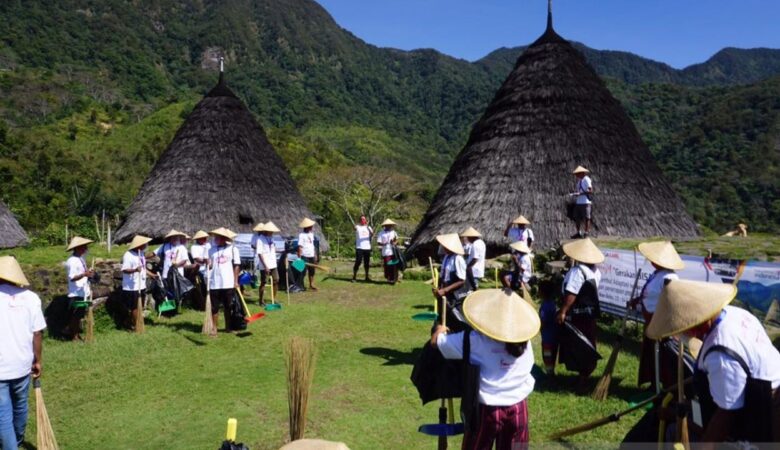
- Indonesian Ecotourism – The Beautiful Journey Through Biodiversity, Conservation, and Rainforests
Leave a Reply Cancel reply
Your email address will not be published. Required fields are marked *
Save my name, email, and website in this browser for the next time I comment.
Recent Posts
- Conquering The Beautiful Mount Rinjani – A Journey to The Summit
Visiting Kota Tua in Jakarta for a Culturally Rich Experience
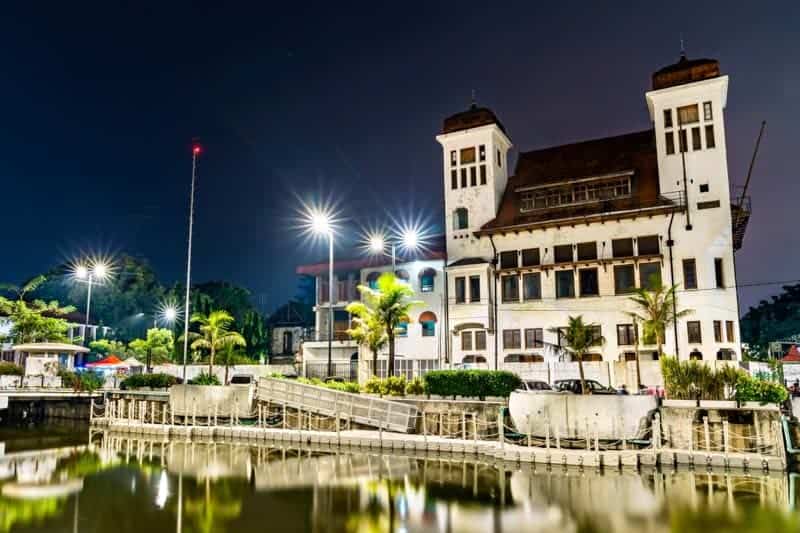
Aside from being a metropolitan with its hustling and bustling, Jakarta has an artistic side that remains mostly untouched by the traffic and the city’s hot air. In case you don’t know, the area is called Kota Tua. In Kota Tua, you’ll visit many historical sites that can enrich your knowledge and experience in Indonesia.
Places in Kota Tua to Visit
Bank indonesia museum.
Although there are many private banks in Indonesia, we all know that the number one bank in the country is still Bank Indonesia. It is a bank that runs the entire country. The number one bank in the country has made important decisions that affected the country’s economy. If you want to know about them, you can check them out in this museum. This museum will tell you all about the central bank’s decisions and the reason they created such rules and regulations. You can also buy coins in front of the museum. They’re pretty unique because they cannot be found easily in the entire city. So grab them while you can!
Stasiun Beos (Stasiun Kota Jakarta)
Although Stasiun Beos can no longer be used, we can still visit the station and admire its artistic and architectural beauty. Stasiun Beos has been standing still since 1929, making it one of the silent witnesses who sees the development of Jakarta. The old station is so loved by the city to the point where it becomes the city’s cultural heritage and is protected by the town.
Fatahillah Square
If you’re feeling tired, it’s time for you to stop by at Fatahillah Square. The square is located in front of Museum Sejarah Jakarta, and it is always bustling with people, especially during lunch and dinner time. Everything is thanks to the square’s strategic location. There’s never a moment where the square is empty. So, don’t be surprised if street performance or classic bikes are circling the area. After all, there is no such thing as no activity in Fatahillah Square.
Kali Besar , which literally means a large river, was once one of the busiest waterways in Batavia (the older name of Jakarta). Merchants and other boats would fill the river, and some would stop to have a conversation nearby. Although we can no longer experience such feelings, we still can appreciate the river’s beauty. Because the river is no longer filled with boats, we can see the river’s blue color and feels the soothing feeling it gives. Besides, it is also the perfect place where we can take memorable pictures too.
Toko Merah (means Red Shop) is another photo spot you should not miss. The building is dominated by the color red thanks to the brick and the washed-out colors of the doors. It is one of many buildings that have witnessed the occupation of Dutch East Indies Company (VOC) since the building has existed since the 1700s. The building is also well-known for its mysterious area. It is not uncommon for people to visit the place at night to test their guts. It’s pretty dangerous to be around the city at night, though. So it’s best to look at the building from the outside in the afternoon.
Cafe Batavia
Cafe Batavia is one of the most well-known restaurants in Kota Tua. Its fame is due to its ambiance, the unique menu, and the regular live music. The place matches the vintage ambiance of the city, so everything there uses classical design. Even the restroom/toilet is classic.
Besides the ambiance, the restaurant also offers food that reminds us of the 90s. At least, that’s how the dishes are served. So when you eat there, you will feel as if you were eating during the era when you were not born yet.
Wayang Museum
Museum Wayang (shadow puppets museum) wasn’t always a museum. Before, the building was actually a church. Now, the building has been turned into a museum that stores wayang (shadow puppets) while displaying them at the same time. Thanks to the museum, there’s no need for you to travel around Indonesia to know its wayang. You can visit the museum instead.
Of course, the museum does not discriminate. It stores not only wayang from Indonesia but also hand dolls from other countries such as Vietnam, America, and others.
Bank Mandiri Museum
Do you want to know how banks looked like before ATMs existed? Wait no more, because you can find out in Musem Bank Mandiri . In the museum, you can find objects used by banks before the technology is as advanced as now. From the typewriter to the cash register, everything is there in this museum.
If you’re tired, you can stop by in the middle of the museum. There is an outdoor garden in the middle of the museum where you can sit back and relax. Once you’ve recharged your energy, you can continue exploring the museum. If you’ve finished exploring the museum, you can always explore it again. Who knows, you might find something you didn’t see before.
Relieving the Past in Kota Tua
Staying true to its name, the historical sites in Kota Tua reflect the part of Jakarta. You can see traces of VOC from the buildings and their architecture. You can also find out about the history of the city by visiting the museums. To make it even better, the buildings there are also great for photoshoots. So while you learn about the past, you will also get great photos!
- Arts & Culture
- Shopping & Entertainment
- Jakarta facts
- To do in Jakarta
Related Articles
Unique bali traditions and rituals that will surprise you.
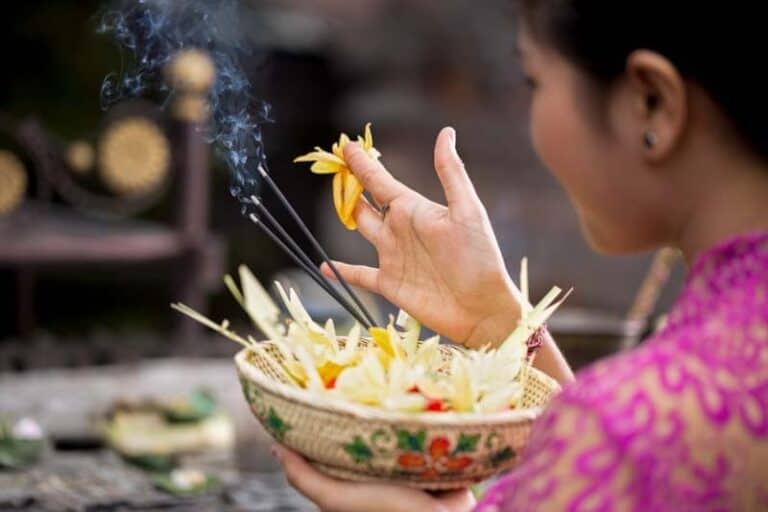
Best Shopping Places in Bali
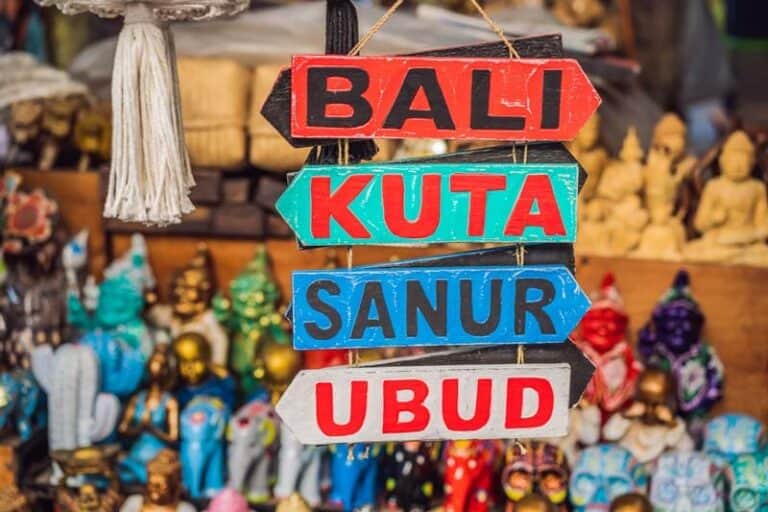
7 Bars in Jakarta for a Fun Night Out
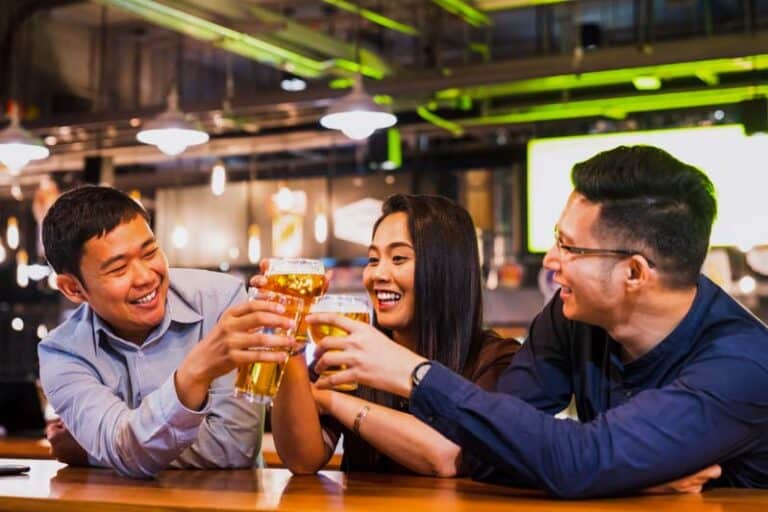
Lombok Souvenirs You Cannot Miss to Bring Back Home
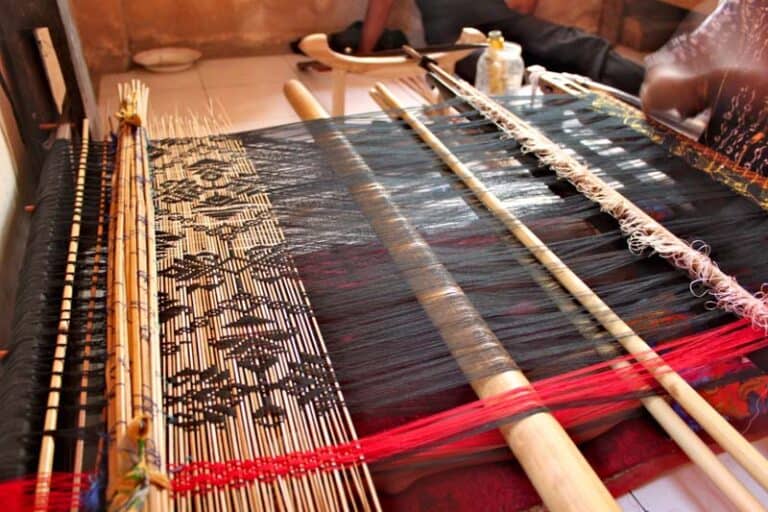
Unleash Your Creativity – Silver Jewelry Making Classes in Bali
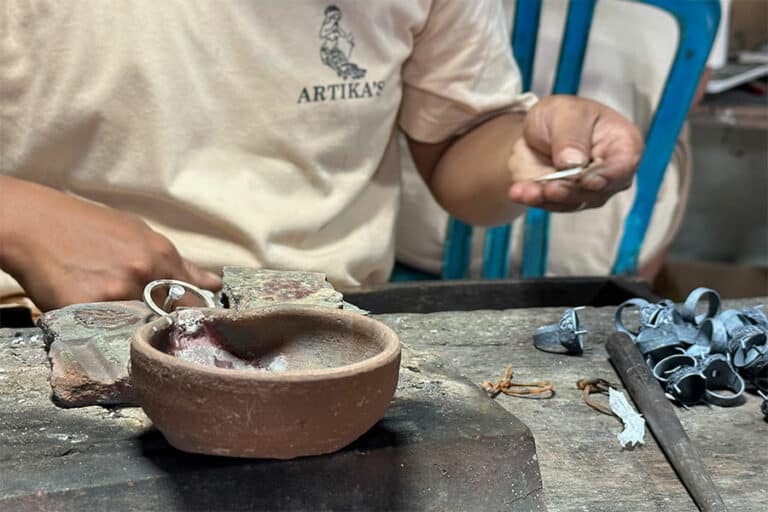
Interesting Facts About Borobudur Temple You Should Know
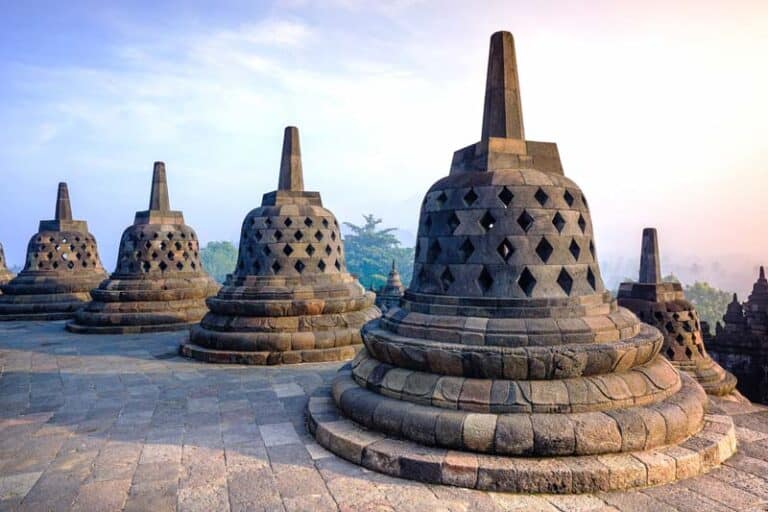

Interesting Places
Jakarta souvenir center, thousand island.
- Ancol Art Market
- Asemka Market
- Bank Mandiri Museum
- Batavia Café
- Cattleya Park
- Dasaad Musin Concern
- Demaga Cinta
- Fatahillah Museum
- Fatahillah Square
- Gelora Bung Karno Stadium
- Glodok Chinatown
- Ismail Marzuki Park
- Jakarta Planetarium
- Joeang 45 Museum
- Kota Intan Bridge
- Menteng Park
- National Monument
- National Archives Museum
- National Museum
- Pluit Reservoir Park
- Seaworld Ancol
- Selamat Datang Monument
- Sumpah Pemuda Museum
- Sunda Kelapa Port
- Suropati Park
- Syah Bandar Tower and Bahari Museum
- Taman Prasasti Museum
- Textile Museum
- The Fine Arts Bali and Ceramics Museum
- Waterbom Water Park
- Wayang Museum
- Around Lhokseumawe
- Baiturrahman Mosque
- Blang Kolam Waterfall
- Boiling Mud
- Coastal Caves
- Cut Nyak Dhien House
- Glen Labuhan
- The Governor's Residence
- Goa Tujuh (Seven Cave)
- Gunongan - Gunongan
- Iboih Recreational Forest
- Indra Patra Fortress
- Japanese And Dutch Fortresses of World War II
- Kuala Merisi
- Laut Tawar Lake
- Lampuuk Beach
- Lhoknga Beach
- Mount Leuser
- Monument RI. Seulawah
- Negeri Museum
- Pantan Terong
- Rubiah Island
- Rubiah Sea Garden
- Suhom Waterfall
- Syiah Kuala Grave
- Tsunami Museum
Kota Tua in Jakarta Special Region - Jakarta Old Town
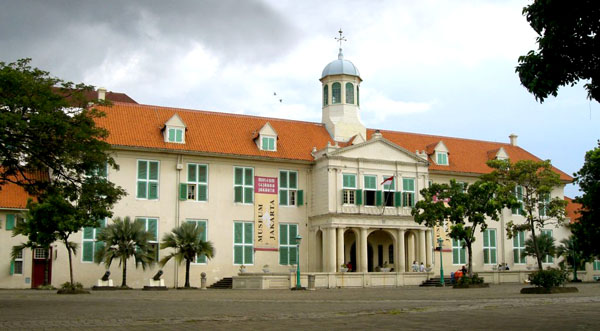
Jakarta is the capital of a beautiful country called Indonesia and it has become a center of government for decades. Aside from being a business and governance center, it also has a splendid history and culture. For example, there is one called Kota Tua or Old Old Town. As the name suggests, it holds numerous historic structures, which were used during the colonialism era. The fact is Jakarta (Batavia) was once considered a strategic spot to trade during the 16th century. Today, the site becomes tourists’ favorite destination to hang out and feel the old atmosphere of the city.
The Nuance Kota Tua Jakarta or the Old Town of Jakarta is located in Kunir Street 23 A, Tamansari. It belongs to West Jakarta City, actually. Despite the small size, which is about 1.3 km2, it has lots of attractions including historical buildings and several spots to hang out. Most of the structures are old museums, but an old harbor also resides near to the area. Tourists usually come there during the afternoon or at night when the nuance feels more comfortable. Some people are also seen in the morning as they enjoy fresh air and do some sports like jogging.
Exploring Jakarta Old Town Due to its historic atmosphere, Jakarta Old Town is suitable for walking around and jogging. That means visitors can take advantage of the nuance to find peace and eradicate stresses. They can explore the area and see numerous old buildings land museums. Some parts of it are used by local vendors to promote their items, as well. These include foods, accessories, etc. For those who want to visit the museums, they must come before 3 pm (the closing hour). The thing is they should avoid coming at noon when the temperature is hot. Thus, the best time to visit is in the morning.
The main charm of Old Town is the formation of old museums, which are scattered near to each other. These include Bank Mandiri, Bank Indonesia, Arts & Ceramics, and Wayang Museum. Each of them offers distinct beauty so tourists should visit them all. As mentioned before, visitors should come before the closing hour. For those who look for a simpler activity, they can enjoy riding a bike around the area. Have no worries. Some locals provide bikes for rent to tourists and the price is quite affordable.
Another unique attraction in Jakarta Old Town is the presence of local artists, those who dress like a statue, soldiers, Dutch lady, and much more. They move around the area and often become an object for photography. Visitors are even allowed to take pictures with them, in fact. At the end of the adventure, tourists should enjoy local snacks called Kerak Telor. It is both crispy and tasty!
Nearby Attractions
- ITC Mangga Dua
- Mangga Dua Morning Market
How to Get There The best transportation service to use to reach Kota Tua Jakarta (Jakarta Old Town) is the commuter line. The fact is that the area is accessible from any location, so it is quite reachable. For those who don’t want to feel any hassle, riding a taxi is the simplest way to head to the site despite the expensive fee.
Where to Stay
- Ibis Mangga Dua Hotel
- RedDoorz Hotel
Betawi Batik to Ondel-ondel Dolls, Featured Products of Betawi
As the capital city of Indonesia, Jakarta is not only famous for its skyscrapers and the title as one of the largest metropolitan cities in the world. There are many other unique things that Jakarta has to offer, one of them is the creative typical product of Betawi—the native people of Jakarta. As is known, Betawi tribe who inhabit Jakarta as well as parts of West Java and Banten have unique cultural products. For example, lenong. However, as time goes by, the existence of lenong is increasingly displaced and it…
Things That Make Tourists Surprised While on Vacation to Kepulauan Seribu
For Indonesians, the name of Kepulauan Seribu is already familiar. However, it is different from foreign tourists who rarely hear about the beauty of these islands. They do not think that there is a beautiful natural tourism that is not far from Jakarta. Want to know more details? When boarding the ship to Seribu islands, foreign tourists find it difficult to communicate with the ship’s crew, because most of them do not speak English. This is because the crew in Kepulauan Seribu are mostly local people who do not speak…
Istiqlal Mosque Becomes a Religious Tourism Destination
Istiqlal Mosque is one of the halal tourist destinations in Indonesia. The construction process in a number of areas of the largest mosque in Southeast Asia has been completed and has made it ready as a place of worship, study, as well as tourism. The Istiqlal Mosque has become an icon of Indonesia. Many tourists and national heads who visited Indonesia then saw the beauty of the Istiqlal Mosque. If you enter to the mosque, with five floors and one ground floor, you will see the splendor of modern architecture…
MACAN Museum, Attractive Vacation Spot in Jakarta
Jakarta City always becomes the center of tourism, especially for foreigners who spend a vacation in Indonesia. It is the capital city of the nation, after all. That means Jakarta becomes a perfect checkpoint before visiting other regions. Aside from that, it also has tons of attractive vacation spots that offer different themes. For instance, there is the MACAN Museum in Kebon Jeruk Sub-District. Tourists only need to reach Perjuangan 5 Street in order to get to the museum. So, what is in there? Well, the official name is the…
Indonesia Tourism
₹ 10,753 onwards
Kota Tua, Jakarta Overview
The Jakarta Old Town or Kota Tua Jakarta bears reminisce of the Dutch era, with its colonial architecture and historical references. The streets of the Old Town boast buildings and structures that date back to colonial times, most of which are converted into museums today. The area is also studded with cafes and restaurants.
Also known as Old Batavia, this relatively small area, covering 1.3 sq. km, was once the nation's most important administrative and business center. Though not all buildings are well-preserved, it remains a charming tourist attraction today that gives a peek into Jakarta’s colonial history and culture. It is also known for its busy night market.
Read More on Kota Tua
Things to do, jakarta travel packages.
Compare quotes from upto 3 travel agents for free
Enthralling Jakarta, Batam Island and Bali Package
Indonesia 7 day itinerary - photography at bali botanical garden, family fun jakarta and bandung, mesmerizing jakarta, bandung and yogyakarta, neverending romance in jakarta and yogyakarta, super saver jakarta, bandung and yogyakarta, top hotel collections.

5 Star Hotels
Cheap Hotels
4 Star Hotels
Guest Houses
Top Hotels Near Kota Tua
8.6 (2442 reviews)
7 kms
Rp 1,150,888 onwards
8.4 (1858 reviews)
Rp 1,010,679 onwards
8.4 (1850 reviews)
Rp 862,179 onwards
8.2 (1563 reviews)
Rp 804,650 onwards
8.0 (1440 reviews)
8 kms
Rp 1,587,300 onwards
8.1 (1307 reviews)
Rp 149,625 onwards
Kota Tua Reviews
Have a question on kota tua.

Other Top Ranking Places In Jakarta
Nearby places.

Related Posts

Food & Drink
Best Malls in Jakarta For Shopping, Food and Entertainment!

Art & Culture
Museums in Jakarta

Experiences
10 Spas in Jakarta for a Truly Refreshing Experience!

Water Parks in Jakarta

Jakarta Nightlife: From Clubs to Bars to Night Markets

Live Music in Jakarta - 13 Places That Ever Music Lover Must Visit

10 Best Art Galleries of Jakarta

Beaches & Islands
Beaches in Jakarta

Sightseeing
Places to Visit in Jakarta

8 Beautiful Golf Courses in Jakarta For The Perfect Hole-in-One

Vegetarian Restaurants in Jakarta For The Perfect Healthy Meals!

History of Jakarta: From Humble Beginnings to a Bustling Metropolis!
Similar Places

Get the best offers on Travel Packages
Compare package quotes from top travel agents
Compare upto 3 quotes for free
- India (+91)
*Final prices will be shared by our partner agents based on your requirements.
Log in to your account
Welcome to holidify.
Forget Password?
Share this page
Jakarta Old Town

Most Recent: Reviews ordered by most recent publish date in descending order.
Detailed Reviews: Reviews ordered by recency and descriptiveness of user-identified themes such as waiting time, length of visit, general tips, and location information.

Also popular with travellers

JAKARTA OLD TOWN: All You Need to Know BEFORE You Go (with Photos)
- Jakarta City Tour (Explore Highlights places & Local activities) (From RM 287.49)
- Jakarta Night Tour : Enjoyable Night time in Jakarta (Hotel Pick-up) (From RM 263.53)
- 4 Hours Jakarta Private City Tour - (Most Tourist Attractions) (From RM 261.14)
- 6 Hours Jakarta Private City Tour - (Must Visit Places) (From RM 356.96)
- City Tour Jakarta (From RM 359.36)
- (0.01 km) Heritel Urban Hostel
- (0.21 km) Bobobox Pods Kota Tua
- (0.51 km) Mercure Jakarta Batavia
- (0.42 km) Wonderloft Hostel
- (0.38 km) Mel's Dorm
- (0.16 km) Batavia Market
- (0.24 km) Cafe Batavia
- (0.12 km) Join X Jeera Coffee House
- (0.07 km) Gazebo Cafe
- (0.14 km) Maitri Vegetarian
- (0.19 km) Fatahillah Square
- (0.11 km) Fine Arts & Ceramics Museum (Balai Seni Rupa)
- (0.14 km) Dasaad Musin Concern Building
- (0.15 km) Colosseum Club
- (0.23 km) Jakarta History Museum (Fatahillah Museum)
- Flight + Hotel Packages

Explore Jakarta Kota Tua: Today’s Old Batavia
Suggested for you.
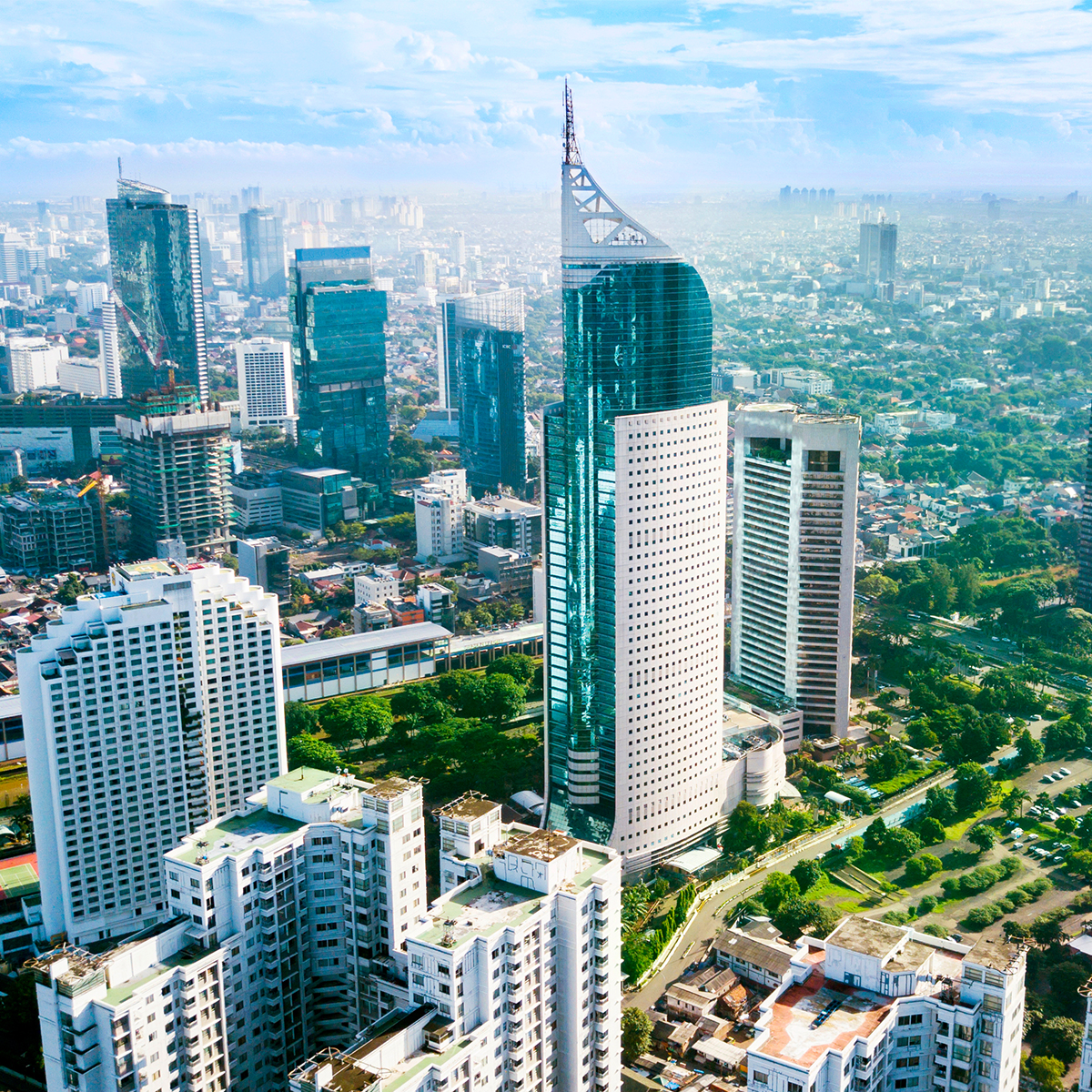
5 Unique Business Hotels for Your Successful Stay in Jakarta

Shop and Dine in Jakarta’s 5 Luxurious High-End Malls
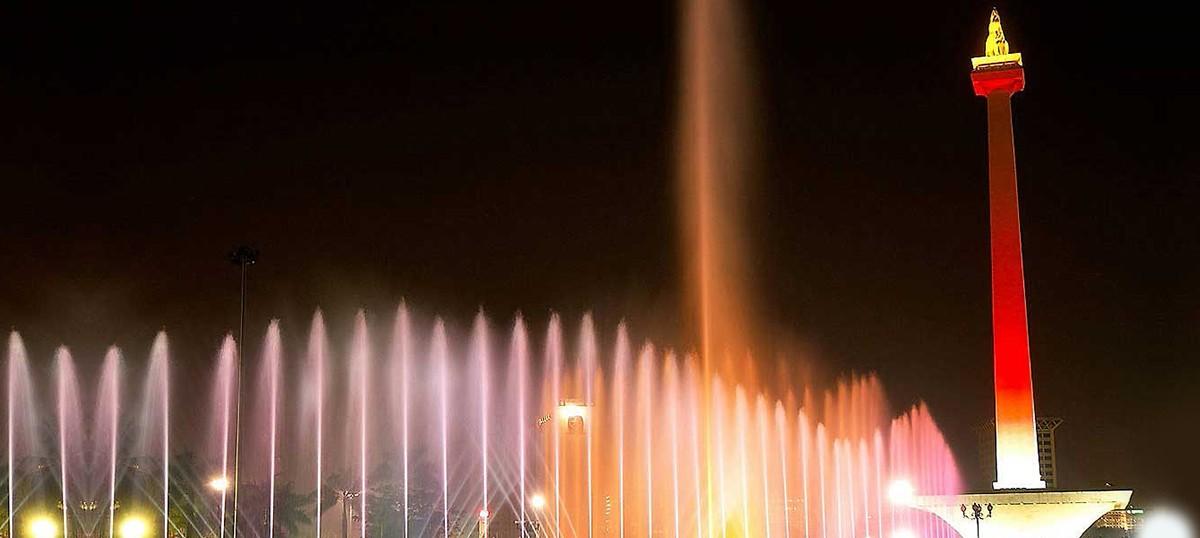
8 among Jakarta’s Luxurious Hotels to fit your Lifestyle

Visit our other website
This is the official website of the Ministry of Tourism, Republic of Indonesia. The contents listed on this website are intended for informational purposes rather than commercial. Any displayed sale is meant as a token of partnership and will always redirect you to our partners' sites.
The use platform uses external services to improve your user experience. By agreeing to these services, your data may be accessed by these companies and provided to third parties. For further information please read our Privacy policy .
Matomo assists by tracking anonymized data to optimize use Plattform continuously.
Open Street Map helps you to localise the case study on a map.
Your choice will be saved with a cookie for the duration of your choice. If you want to save your settings for longer than the duration of the browser session an extra cookie will be set(which expires after the set time). You can always accept to load external services while browsing use platform and withdraw acceptance on the Privacy policy page .
For further information check our Privacy policy page .
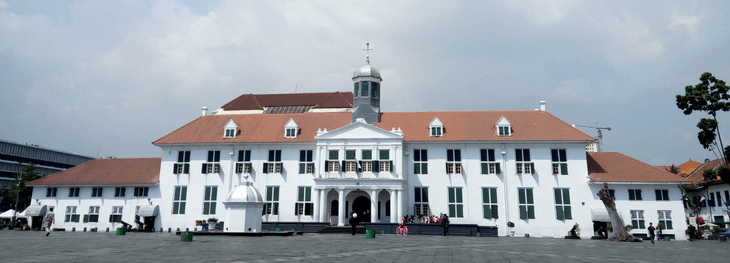
Revitalizing cultural heritage in Jakarta’s historic Kota Tua neighborhood
Main actors.
City Government, National Government, Private Sector, Community / Citizen Group
Project area
Ongoing since 2014
The city government of Jakarta has developed a comprehensive urban plan to revitalize the historic neighborhood of Kota Tua in an inclusive and participatory way.
Kota Tua is located in the historic heart of Jakarta and contains a number of cultural heritage sites. These include buildings and canals that were constructed during the 17th and 18th century colonial period. These sites serve as tourist attractions and contribute to the city’s economic, social and cultural growth.
Despite its rich cultural heritage, the area has declined as it suffers with poor infrastructure and service provision. The city government of Jakarta has instituted a comprehensive development plan to renew the neighbourhood’s vibrant atmosphere, improve the standard of living for citizens and revitalize the economy.
The plan includes a proposal to apply for UNESCO World Cultural Heritage status. If successful, the revitalization program will be accelerated in developing Kota Tua as a more attractive destination to both domestic and international tourists further contributing to its overall economic growth.
This case study was contributed from the UCLG Learning Team.
Peer-Learning Note #22 on Revitalizing Cultural Heritage
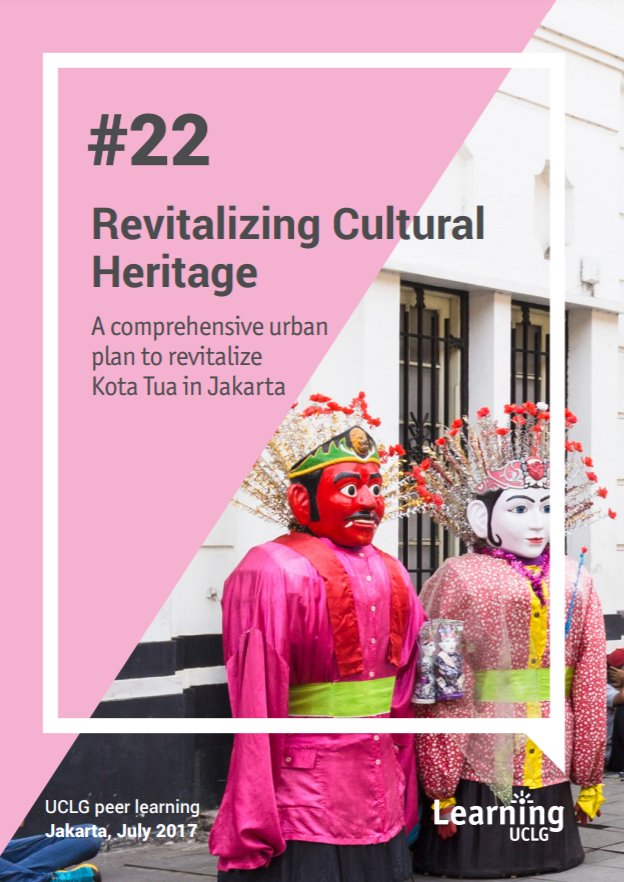
For further information about the case study, click here.
Sustainable Development Goals
The Kota Tua (old town) neighborhood dates back to the pre-colonial era and was an important trading port in the 14 th century. With the arrival of the Portuguese in the 15 th century, Kota Tua became a major port for the pepper trade. In 1618, the city was conquered by the Dutch East India Company and was renamed Batavia. In the following centuries, Batavia became the center of the Dutch East-Indies colony and developed into a vibrant and multi-ethnic city. In the 19 th century, due to the degeneration of Batavia, a new town; Weltevreden was built further to the south. This led to Batavia becoming a city with two centers.
In 1942 Batavia fell to the Imperial Japanese army and the Dutch officially surrendered to Japan; the city was renamed Jakarta. After World War II, Indonesia declared its independence and in August 1945, Jakarta became the capital of the newly founded Republic of Indonesia. During the Japanese occupation, Kota Tua experienced significant physical decline which continued after independence was declared. Many former Japanese buildings were abandoned or used as illegal warehouses. With the proliferation of illegal buildings, poor waste treatment facilities, and the growth of crime, the historic city center deteriorated considerably.
In 1974, a revitalization program for Kota Tua was introduced. The program focused on the protection of heritage sites and tourism developments. Despite these efforts, the service provision and infrastructure remained sub-standard and many buildings were run-down. The lack of pedestrian areas made accessibility for inhabitants difficult and together with the unregulated occupation of sidewalks by street vendors and parked motor cycles became a major problem for advancing Kota Tua as a tourist destination. In 2014, the city government deployed the Kota Tua master plan with the objective of developing the historic city center as a conserved cultural area.
The recent efforts to revitalize Kota Tua commenced in 2005 with the announcement of a revitalization program by the city government. In 2011, Kota Tua was declared a national tourism destination by the Indonesian Ministry of Tourism which enhanced its role as a key tourist area of Jakarta. In 2014, the city established a master plan for the Kota Tua area which intensified efforts to conserve and revitalize the historic city center.
A key objective of the revitalization plan is to increase tourism to Kota Tua. This is in line with the Ministry of Tourism’s plan to position Jakarta as the major destination for international tourists visiting Indonesia. For this purpose, the preservation of the neighborhoods cultural heritage plays a crucial role, as it has economic value for both tourism and business.
Another key objective of the plan is the creation of high quality public spaces, including the redevelopment of Kalijodo – a red light district that has been transformed into an integrated family-friendly space. Previously, Kalijodo was densely populated and infamous for activities such as drug trafficking, gambling and prostitution. Today, the 3.4 hectare area is a semi-natural green park, including a playground, an international-standard skate park, with a Betawi-style mosque and a food court. Critically, the entire redevelopment process was organized in a participatory way, actively including the local residents and various stakeholders. For affected residents, the city provided housing compensation and free skills training at vocational centers. Furthermore, child-friendly facilities, including a library and a skate park were set up and a wall for street graffiti to attract young people was established. This inclusive approach led to a successful revitalization of the area and to a very high satisfaction among residents and visitors with the new public space.
A further objective has been the improvement of the accessibility of Kota Tua, which was identified as crucial for the successful implementation of the project. The city government has prohibited cars and motor cycles from the central Fatahillah Square that is used as meeting point and for events. The area, which attracts many tourists, is now easier to access and pedestrian friendly. However, for the pathways along Kali Besar canal and other popular areas of the city, solutions creating more public space and connecting those in a pedestrian-friendly manner still have to be found. The same applies to the only partly solved problem of illegal parking and street vendors who often occupy the sidewalks. Additionally, the improvement of traffic flows, water supply and waste management is being undertaken.
The city of Jakarta commenced the process of revitalization with the implementation of the Kota Tua Revitalization Program in 2005 followed by the Master Plan for the area in 2014. The city has focused its efforts primarily on the improvement of infrastructure, accessibility and services. However, the complex governance and ownership structures make collaboration with other public and private stake-holders necessary. The national government has supported efforts to foster tourism in Kota Tua and declared it a national tourist destination in 2011. As the majority of the buildings are privately owned, refurbishment, to a large extent, has to be carried out by the proprietors due to the city’s limited financial resources. In addition to government support, private investments and initiatives have been important for the revitalization of Kota Tua.
The revitalization of Kota Tua has led to the refurbishment of many of the historic buildings and started a process of active preservation of the neighborhood’s cultural heritage. The increased measures to improve infrastructure and services in the neighborhood have achieved positive results but sustained and coordinated efforts remain necessary for ongoing success. Examples such as the Kalijodo area demonstrate the progress achieved in creating new and inclusive public spaces. The benefit of including stakeholders and local residents in the process of revitalization is reflected in the high satisfaction of residents and visitors with the implemented projects.
The proposal to position Kuta Tao as a tourism center is realizing valuable results with the number of visiting international and domestic tourists increasing and new restaurants, bars and coffee shops opening.
The application for UNESCO World Cultural Heritage status can be seen as positive recognition by all stakeholders of Kota Tua’s cultural heritage.
In Kota Tua 281 buildings are registered as heritage buildings with many in very poor condition. 50% of the buildings are publicly owned and split between the city of Jakarta (2%) and the Indonesian state or state-owned companies (48%). The other 50% are privately owned.
With limited financial resources the city government doesn’t have the appropriate budget to guarantee conservation of the cultural heritage in Kota Tua. While the current preservation orders and lack of infrastructure impeded additional private investment, it is difficult for the city to ensure the conservation of historic buildings as it relies on collaboration with private proprietors and the national state. Consequently, private investment needs to be sought through a combination of regulations and incentives. Corporate social responsibility (CSR) and public-private partnerships (PPP) must be considered to attract funding. Cross-sector collaboration through an institutional framework is also a valid approach to overcome difficulties to raise sufficient funding.
Moreover, the management of Kota Tua involves a large number of agencies and institutions from the local through to the national level. The lack of communication and coordination between them makes it difficult to manage the revitalization process in an organized and effective way. Above all, there is a need for strong city government leadership to coordinate all stakeholders in order to facilitate the revitalization process.
The main physical issues to be considered for successful revitalization are accessibility, safety and comfort in the old city center as well as the protection of historical buildings. One of the first measures is the improvement of infrastructure and transport facilities. This ensures the accessibility of the area and raises the living standards for local residents and visitors. It is important to promote public transport rather than private cars and to prioritize pedestrian comfort and safety. Additionally, the construction of bike paths should be considered and a solution for car and motor-cycle parking must be found. Moreover, adequate protection against further deterioration of heritage buildings and artefacts must be provided. Simultaneously, a mixed-use of living, working, and recreational facilities, including mixed housing has to be considered in the redevelopment. Finally, to increase the appeal for tourists, to foster the local cultural life and to bring back the vibrant atmosphere, various cultural events such as festivals, temporary/semi-permanent markets and night bazaars should be organized.
The most important non-physical success factors are related to building institutional frameworks. The city government and stakeholders have to reach to a consensus that Kota Tua not only reflects the identity of Jakarta but also of Indonesia. Key stakeholders must be encouraged to conserve the site independently. This could be done by providing incentives and appropriate regulation. Encouraging civil engagement in the decision-making process is also recommended in order to enhance ownership. Urban renewal needs strong guidance from government authorities. In the case of Kota Tua, the national government must introduce appropriate legislation and the city of Jakarta has to establish and implement coherent regulations. Moreover, a single, strong, control unit is necessary for the effective management of the program. Jakarta has already established a unit to manage the Kota Tua area but it currently lacks authority. It is necessary to effectively empower this unit so that it can implement strong policy and ensure smooth collaboration between the different departments of local and national government.
UCLG (2017): Revitalizing Cultural Heritage. A comprehensive urban plan to revitalize Kota Tua in Jakarta.
External links / documents
#22 Revitalizing Cultural Heritage, A comprehensive urban plan to revitalize Kota Tua in Jakarta, UCLG peer learning Jakarta, July 2017
UCLG Learning ›
United Cities and Local Governement (UCLG) ›

Want to know more about this project?

Barcelona (área metropolitana), Spain
Uclg learning.
Institution | Local and Regional Government Network
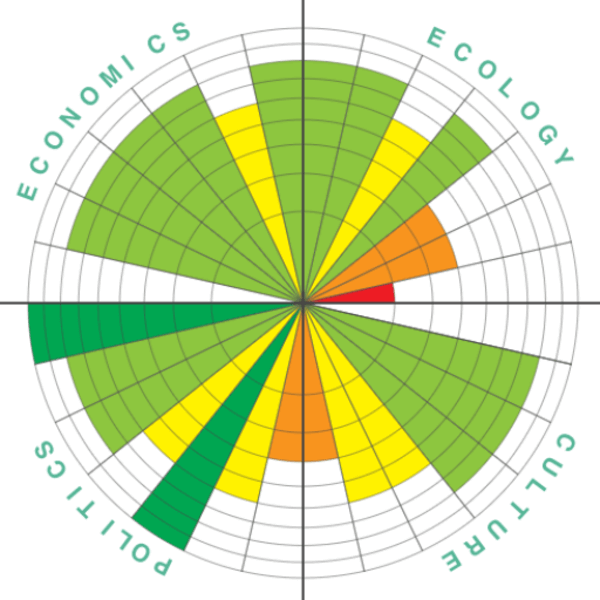
Melbourne , Australia
Individual | Content Curator
Photo gallery

Do you like this project?
Related case studies.
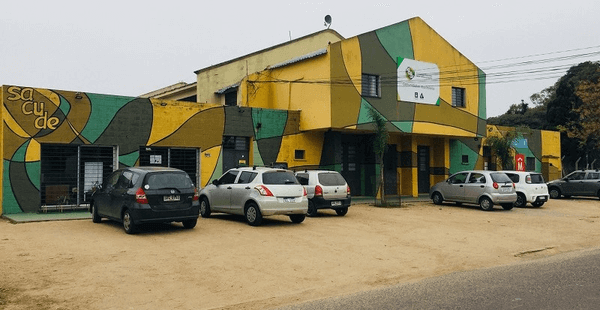
Montevideo, Uruguay
Sacude municipal complex.
The SACUDE Municipal Complex provides facilities and programmes to improve the quality of life for citizens living in the Casavalle Basin settlement in Montevideo.

Quito, Ecuador
Metropolitan district of quito resilience strategy.
The city of Quito is preparing to face the challenges of the 21st century based on its adaptive capacity, which is built on social and economic inclusion, efficient urban performance and environmental sustainability.
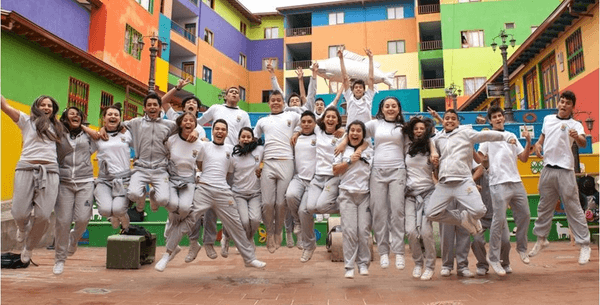
Antioquia (Departement), Colombia
Educational parks for youth.
Building on a widely-hailed experiment in Medellin, the entire surrounding province of Antioquia has set up a network of 80 educational parks designed to supplement traditional education with programs to honor young peoples' inherent skills and citizenship potentials.
What is a community contact?
Have you been involved in this project and want to share your experience with other users from our community?
- will be able to keep the project information up-to-date
- will be listed on the project page as a community contact, so other users can directly ask you questions about it via our platform’s internal messaging service (your email address will stay private)
- your personal profile will receive greater visibility on our platform and be ranked higher in the search results
- your volunteer contribution may help inspire and improve similar initiatives around the world!
- Are you already registered on the platform? Then simply log in and click the "Apply as a community contact" button below. We will review your request and be in touch.
- Are you not yet registered on the platform? Then you must first create your profile on our "Sign up"-page . Once your profile has been activated, you can return to this page and apply as a local contributor for the project.

IMAGES
VIDEO
COMMENTS
About Kota Tua. Kota Tua Jakarta means, ... Being one of the most popular tourist areas in Jakarta, it is on all the local routes. Public transport stops right at its front door, and runs regularly. Probably the best way is via the local free bus service, the Jakarta Explorer. This service is made for tourism, and runs on several routes around ...
Jakarta History Museum. We start our walking tour of Old Jakarta in Fatahillah Square, the centre of Kota Tua. The Jakarta History Museum is the largest building on Fatahillah Square and takes centre stage. Inaugurated in 1710 as the city hall (stadhuis) of Batavia, it also served as the administrative hub of the VOC.
Kota Tua is one of most popular places to visit in Jakarta. It is 'Jakarta's Old Town'. This is an area about 4.5 km north of the Monas that mainly consists of Dutch colonial buildings that were built during the 17th century. When you visit Kota Tua, you will see an area of the city that is quite distinct from other areas of Jakarta.
Offering iconic colonial ambience and original-style Dutch East India cuisine, Cafe Batavia is open daily. Housed in an 1830s buiilding, Cafe Batavia has two storeys comprising a bar, a stage for performances, and a lounge area on the ground floor. The upper floor features an upscale dining hall catering for 150 guests.
The Fine Art and Ceramic Museum is located inside the old Court of Justice built by the Dutch in 1870. The old court makes up one of the sides of the main square of Kota Tua and is one of the most impressive architectural buildings in the area. The museum houses traditional ceramics showcasing the range of designs across the archipelago.
The Jakarta Old Town is divided into two main areas, the Kota Tua Barat and the Kota Tua Timur. The Kota Tua Barat is the western part of the old town and is home to the Fatahillah Square, which is the most popular spot in the area. The square is surrounded by several historical buildings, including the Wayang Museum, the Bank Indonesia Museum ...
One by one the crumbling properties around Fatahillah Square and the Kali Besar canal are being renovated. App and map in hand, we rented two vintage bikes and matching sunhats at the square and pedalled away from the tourist crowds. We checked out ten new places in the old town and liked what we found. 1. MULA Kota Tua & Kafe Sunyi.
Kota Tua Jakarta (Indonesian for "Jakarta Old Town"), officially known as Kota Tua, is a neighborhood comprising the original downtown area of Jakarta, Indonesia. ... The revitalization of Kota Tua was aimed to turn the area into a tourist friendly and culinary destination. The sidewalks widened and bicycle lane added.
Museum hopping is a recommended activity while visiting Kota Tua. There are three museums located in Fatahillah Square: the Jakarta History Museum (Museum Sejarah Jakarta), the Museum of Fine Arts ...
Kota's 1.8-acre central square is usually teeming with Indonesian tourists, and encapsulates the vibrant, edgy and slightly daunting character of Jakarta. Dotted with multi-coloured striped parasols, it is the business arena of some 200 carts selling all manner of tourist tat and street food. A multi-layered aroma of sweet, spicy and barbeque ...
It is the old town of Kota Tua that is a big contrast to the vibrant streets in Indonesia's Capital Jakarta - the world's second most populated city. Most famously known for Fatahillah square in the middle of the town, Kota Tua has become one of Jakarta's main tourist spots. Both locals and foreign tourists come here to get a taste of ...
Kota Tua ( Jakarta Old Town ) is a historical area located in the city of Jakarta, Indonesia. It is located in the northern part of the city. Home; Travel Guide; ... Kota Tua Jakarta- Popular Cultural and historical tourism in Jakarta Herry July 6, 2023 0 Comment 455. Table of Contents.
Relieving the Past in Kota Tua. Staying true to its name, the historical sites in Kota Tua reflect the part of Jakarta. You can see traces of VOC from the buildings and their architecture. You can also find out about the history of the city by visiting the museums. To make it even better, the buildings there are also great for photoshoots.
Kota Tua Jakarta or the Old Town of Jakarta is located in Kunir Street 23 A, Tamansari. It belongs to West Jakarta City, actually. Despite the small size, which is about 1.3 km2, it has lots of attractions including historical buildings and several spots to hang out. Most of the structures are old museums, but an old harbor also resides near to the area.
Here is taking a look at some of the main tourist attractions within the Kota Tua area. 1. The Fatahillah Square - The Square was the main centre of the Dutch administration, surrounded by buildings that were homes or offices of the Dutch East India Company. A walk around the square is enough to be pushed back in time.
Kota Tua Jakarta is the area of first settlement in Jakarta. It starts from Sunda Kelapa harbor to Pecinan (China Town). Thus, this area is rich with history. Read more. Written 20 January 2024. This review is the subjective opinion of a Tripadvisor member and not of Tripadvisor LLC. Tripadvisor performs checks on reviews as part of our ...
Opening Hours: 10:00-20:00 WIB. 5. Ragunan Zoo. Ragunan Zoo is one of the oldest zoos in Indonesia, especially in Jakarta. With around 300 different types of animals, this zoo offers the experience of seeing various species of animals, ranging from primates to mammals and fish. Admission Price: Rp3.000-Rp4.000/orang.
'Chinatown' and 'Pekojan' in Kota Tua Historically, cities on the island of Java were colonial cities inherited from Dutch design, including the old city of Jakarta. In the old city area of Jakarta which is now a cultural heritage area, apart from the Fatahillah Museum, there are also cultural tourism destinations in the 'Chinatown,' 'Pekojan ...
revitalisation of Kota Tua, Jakarta through sustainable tourism and heritage conservation [. The overall goal of the project is to support the initiative and vision of the Jakarta government to protect, conserve and revitalise the area of Kota Tua while providing opportunities for sustainable development for local people and businesses.
Offering iconic colonial ambience and original-style Dutch East India cuisine, Cafe Batavia is open daily. Housed in an 1830s buiilding, Cafe Batavia has two storeys comprising a bar, a stage for performances, and a lounge area on the ground floor. The upper floor features an upscale dining hall catering for 150 guests.
As you take your first step in the glorious Kota Tua (Old Town) area, this building is where your eyes will land upon foremost, Jakarta History Museum, a colonial charm, a classical Dutch renaissance style of architecture. The Jakarta History Museum is one of the most favourite museums in Jakarta and has become an icon for the Kota Tua area.. Originally called the Stadhuis, this stately ...
In 2011, Kota Tua was declared a national tourism destination by the Indonesian Ministry of Tourism which enhanced its role as a key tourist area of Jakarta. In 2014, the city established a master plan for the Kota Tua area which intensified efforts to conserve and revitalize the historic city center.
Hutan Kota by Plataran. SELENGKAPNYA 23-04-2024 - 28-04-2024 . Art Jakarta Gardens 2024. Hutan Kota by Plataran. SELENGKAPNYA ... Jakarta is more than just a collection of skyscrapers, there are many things to see and do in Jakarta. Urban tourism is an attraction that is owned by Jakarta, all forms of tourism activities can be done in Jakarta. ...